Marine invert lab exam 1
1/58
Earn XP
Description and Tags
Protozoa, porifera, ctenophora, and cnidaria
Name | Mastery | Learn | Test | Matching | Spaced |
|---|
No study sessions yet.
59 Terms
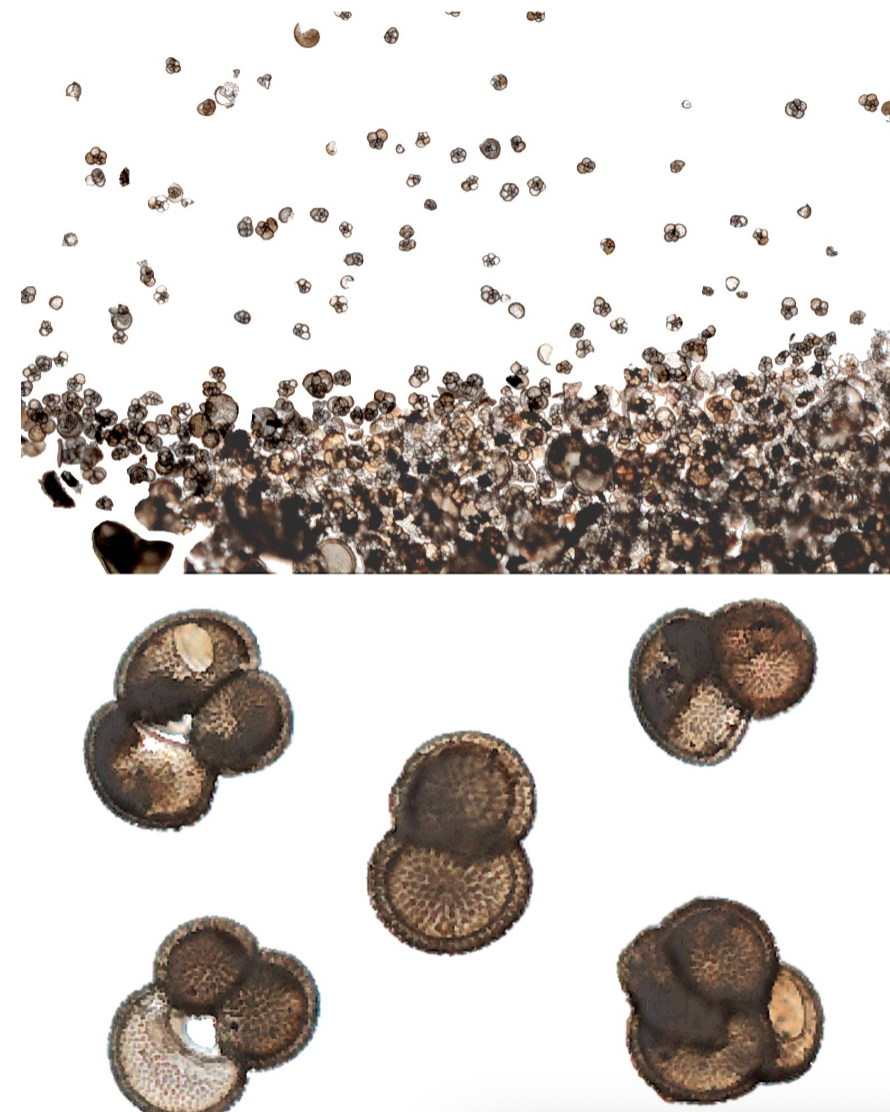
What phylum is this organism in?
What is their body made of?
What is a defining characteristic?
What is their habitat?
What do they eat?
Phylum Foraminifera, “shelled amoebas”
Body composition: CaCO3
Defining characteristic: reticulapodia (net-like)
Habitat: Benthic and Planktonic
They eat small particles/ are microomnivores
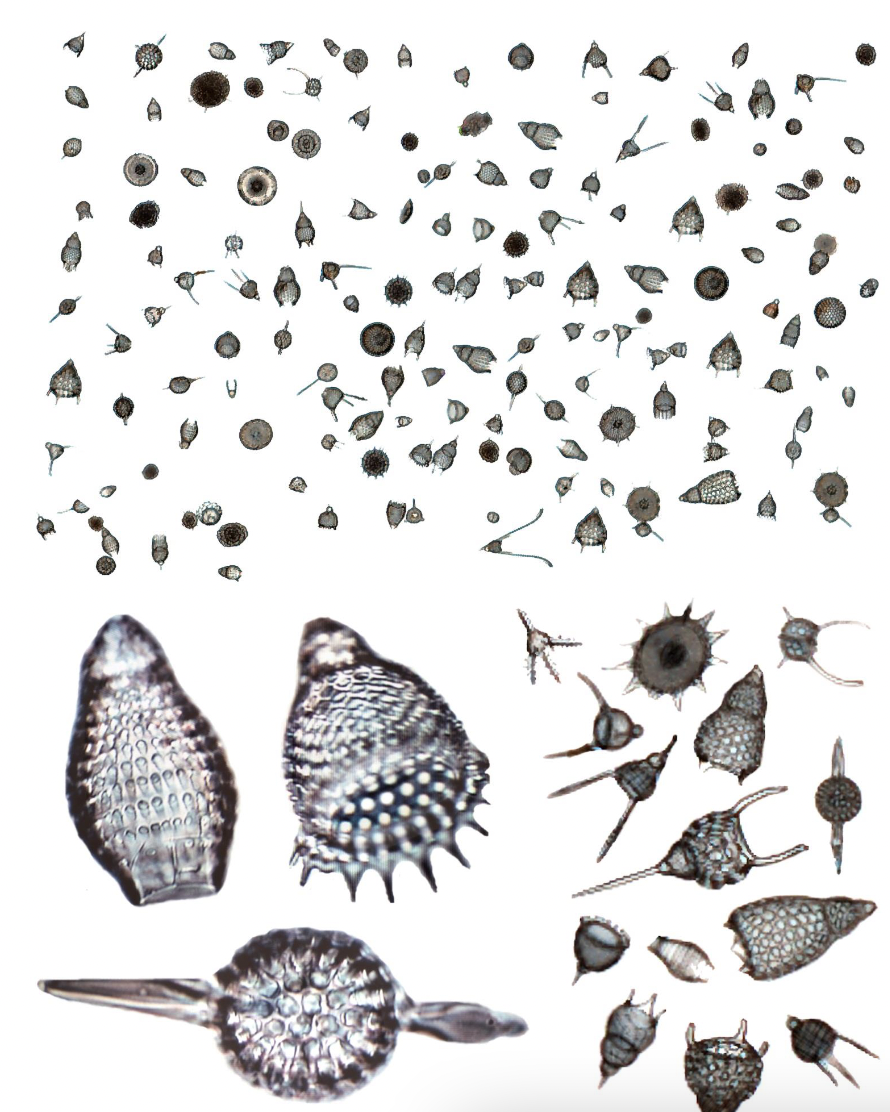
What phylum and class is this organism in?
Phylum radiolaria, class polycystinea
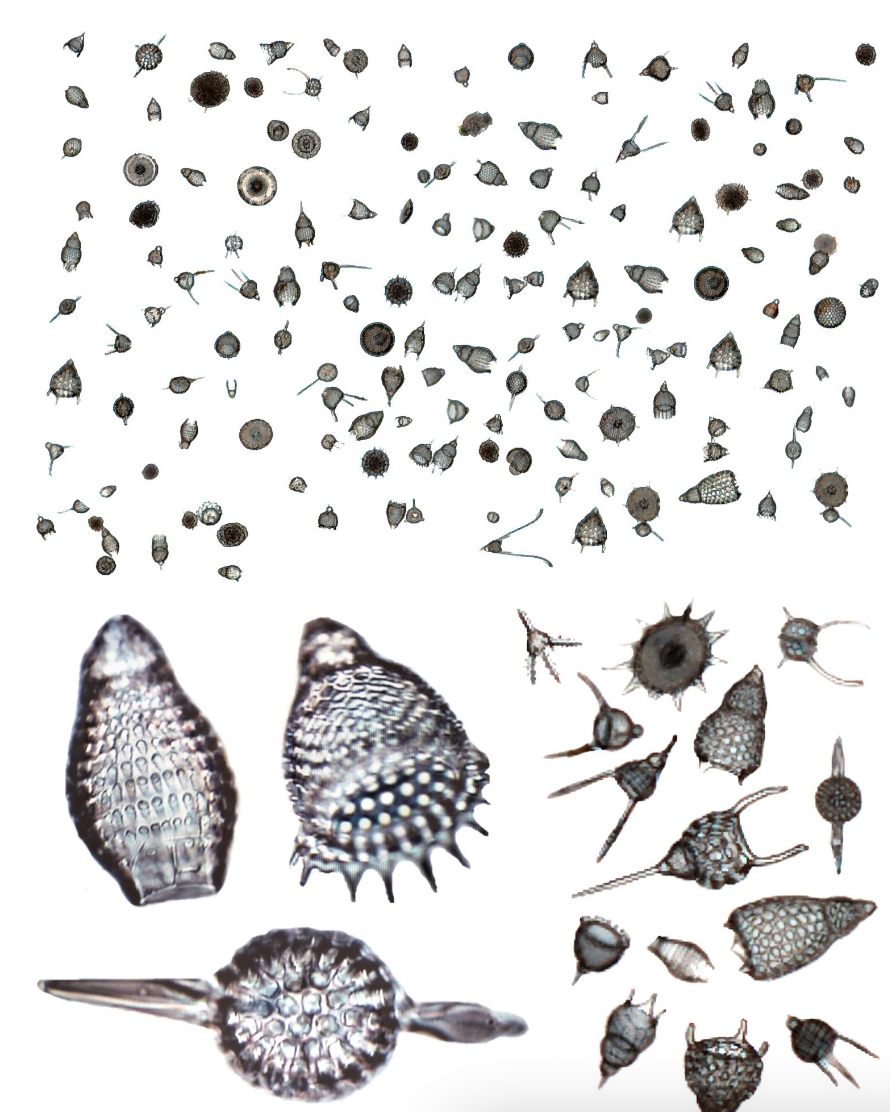
What is this radiolarian’s shell made of? What is a defining characteristic of these organisms?
The shell is made of SiO2, (silicon dioxide) and these amoebas have pseudopods called axopodia that are long and spiky
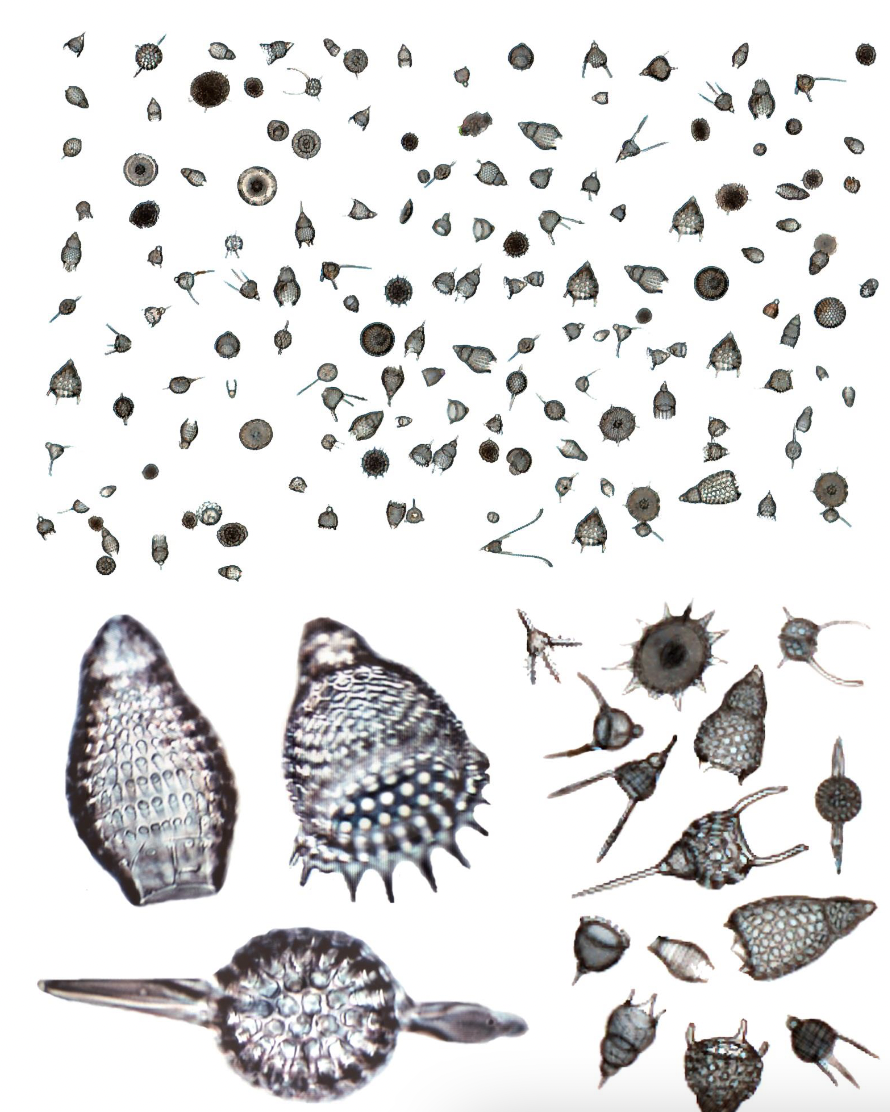
What phylum and class is this creature? Describe their habitat and feeding.
Phylum Radiolara and class Polycystinea. They are mostly planktonic microomnivores that feed using axopodia, and inhabit the lower part of the food web.
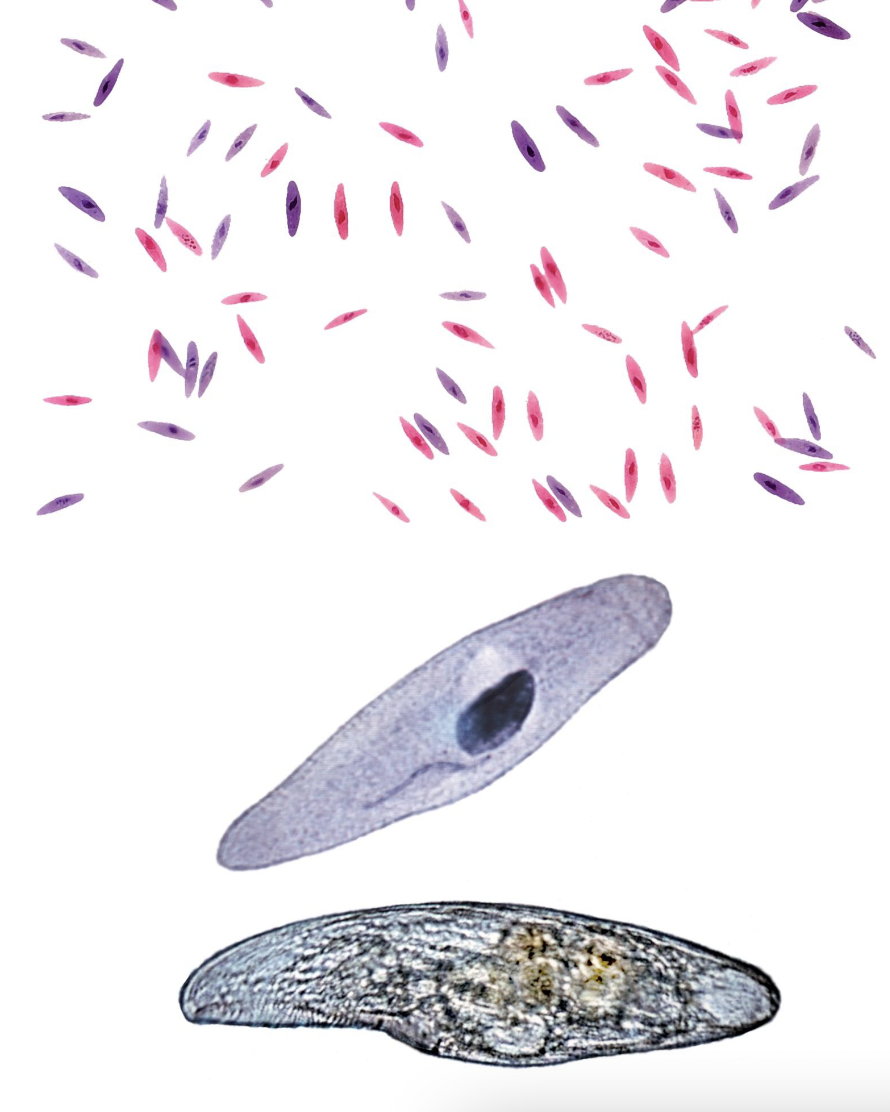
What Phylum is this creature in? Describe their habitat and diet.
Phylum ciliophora
Habitat: planktonic and benthic
Feeding: small particles, micro-omnivores

What phylum, class, and subclass is this organism? Describe its habitat and feeding.
Phylum Apicomplexa
Class Conoidasida
Subclass Gregarinasina
Habitat: parasitic inside the coelom of invertebrates
Feeding: parasitic
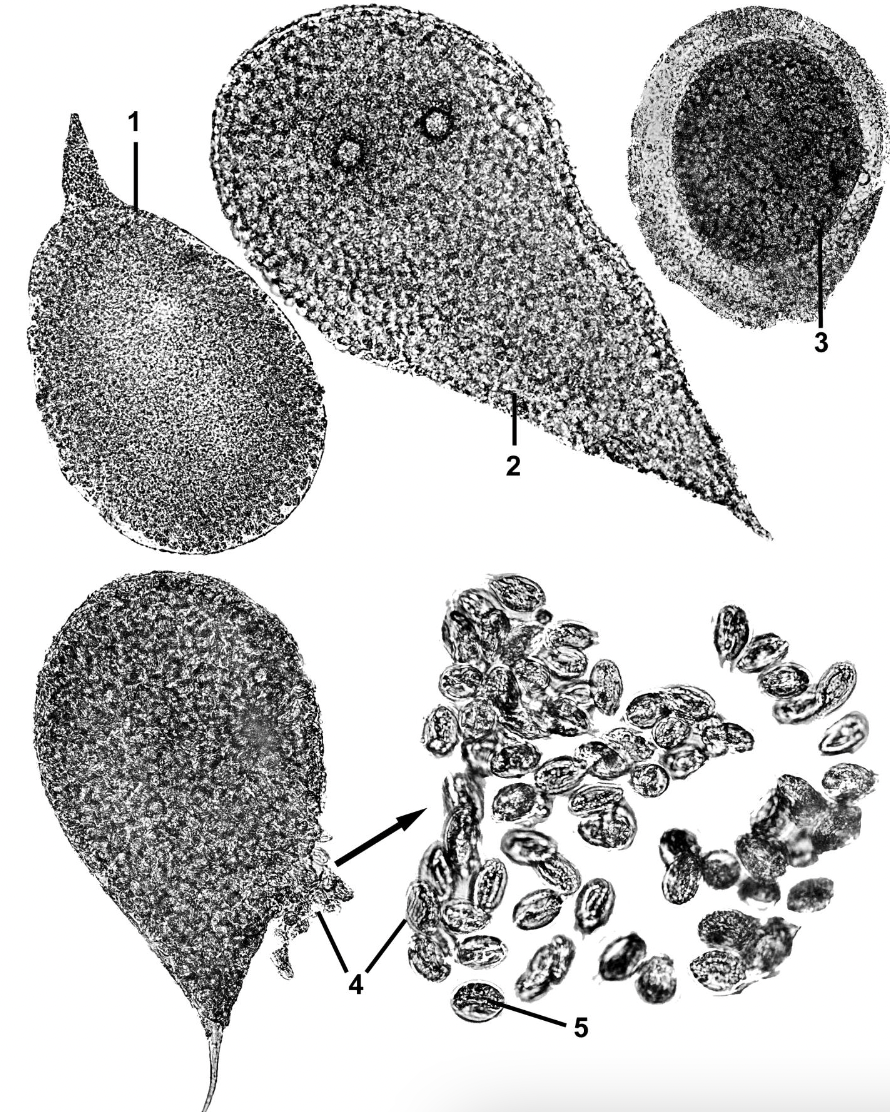
Identify the correct stage for 1, 2, 3, 4, and 5
Trophozoite
Trophozoites after syzygy- Nuclei will produce gametes
Gametocyst
oocysts from inside gametocyst
Sporocytes inside oocyst
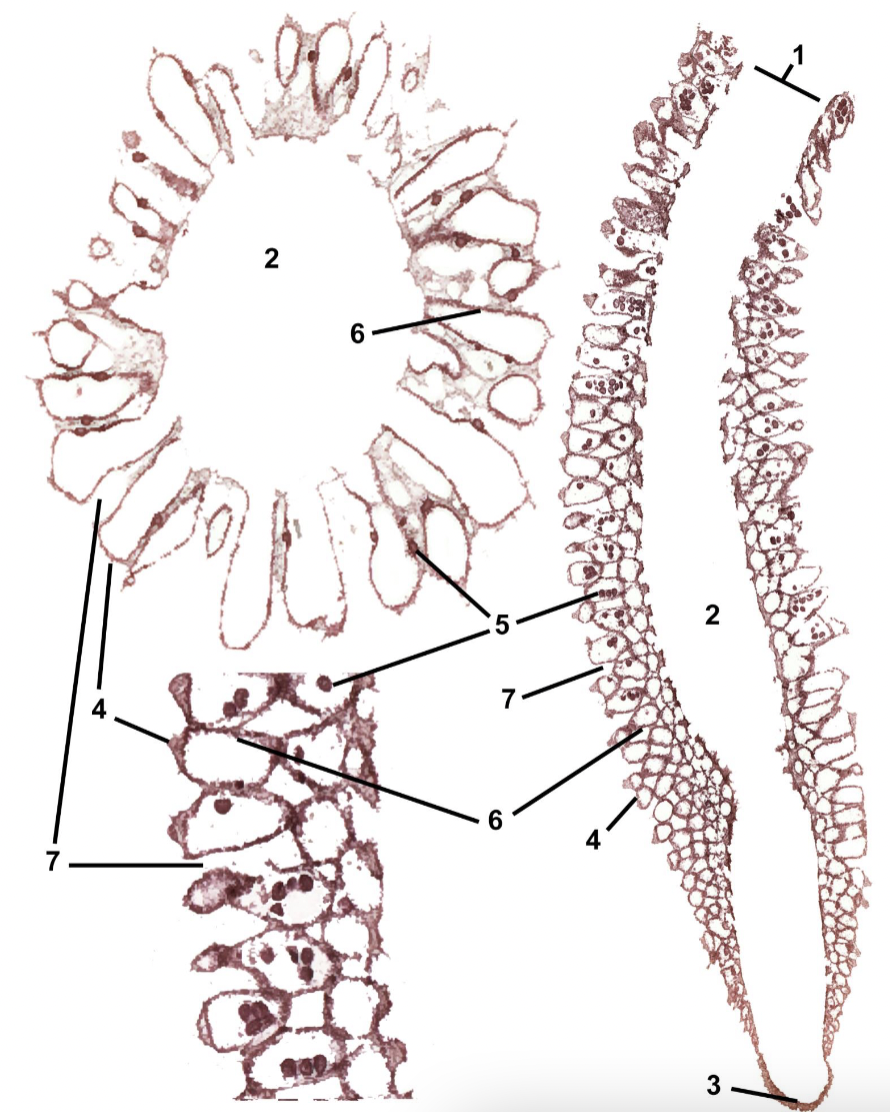
What phylum and class is this organism from? Describe its habitat and feeding.
Phylum porifera
Class calcarea
Habitat: attached to structures, reefs
Feeding: microfilter
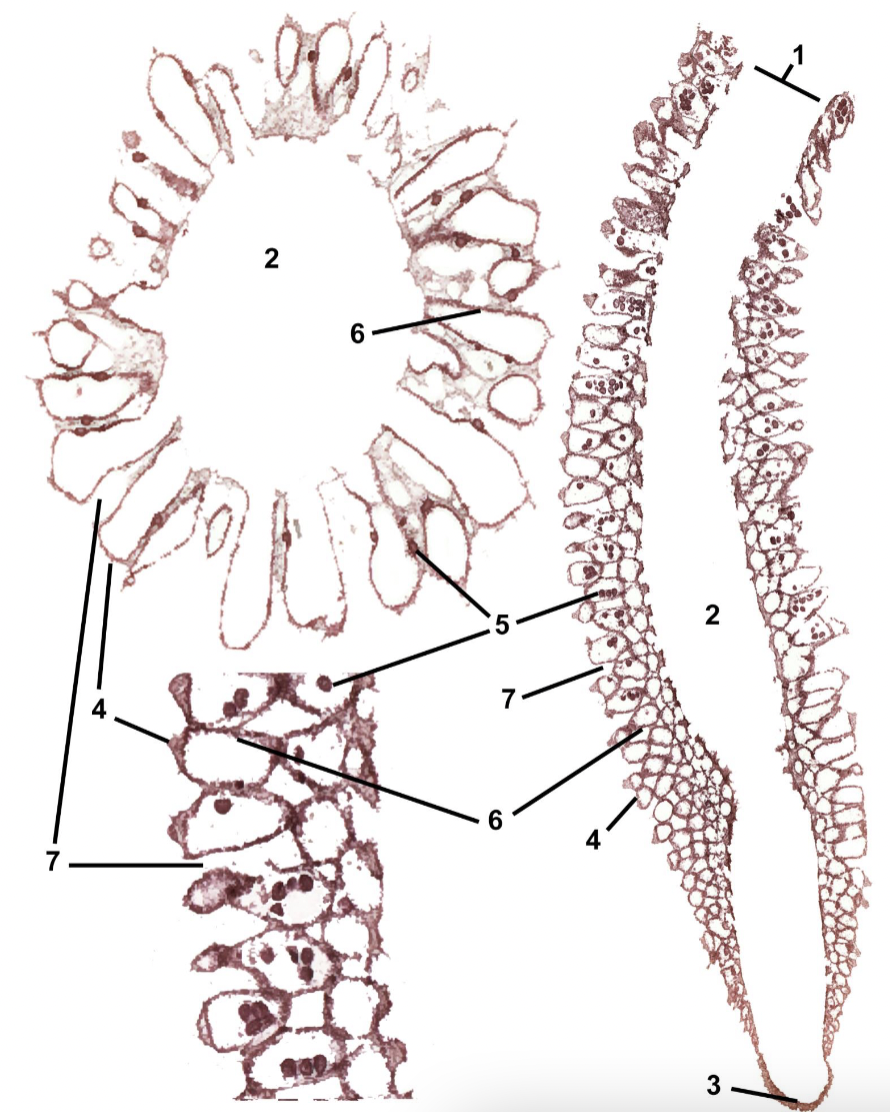
Correctly identify each numbered part of this calcarean.
Osculum
Spongocoel
Attachment point
Pinacocyte layer
Amphiblastula larvae
Choanocyte layer
Ostia
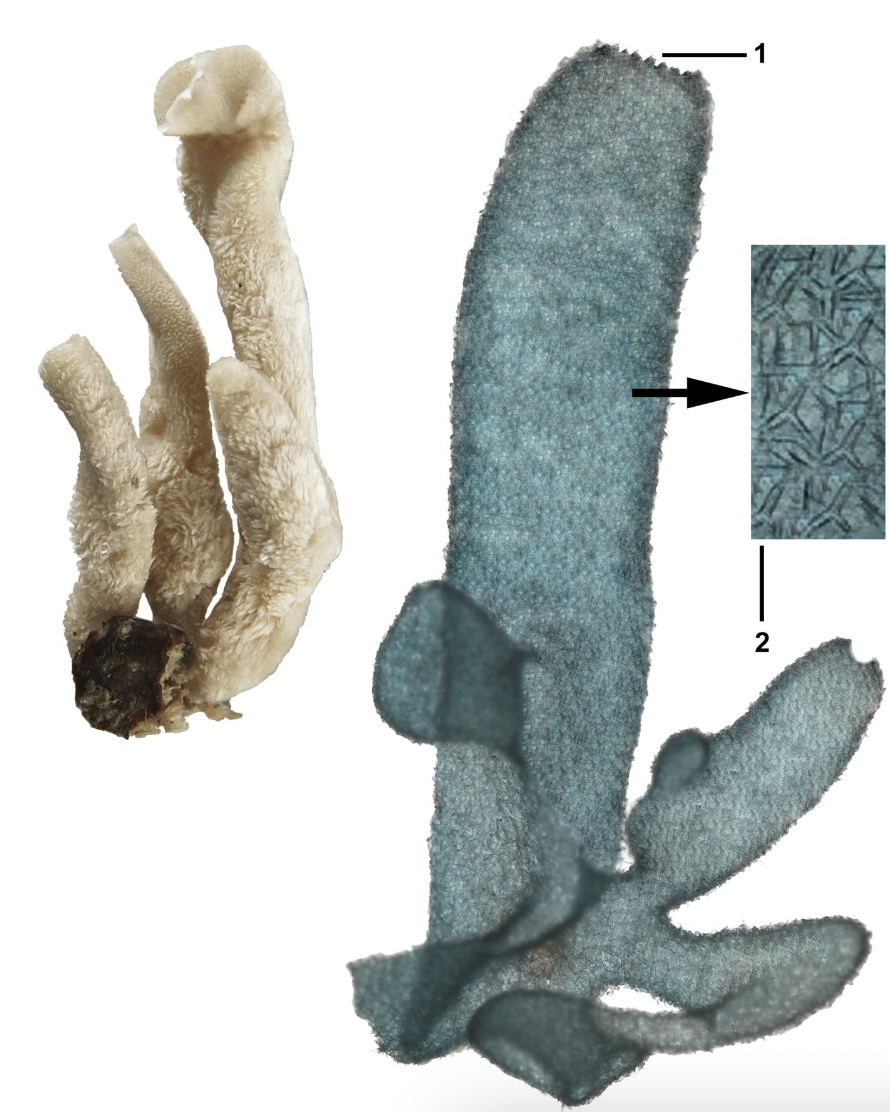
What phylum and class is this organism in? Identify the two labeled parts.
Phylum Porifera
Class Calcarea
Osculum
Spicules embedded in sponge
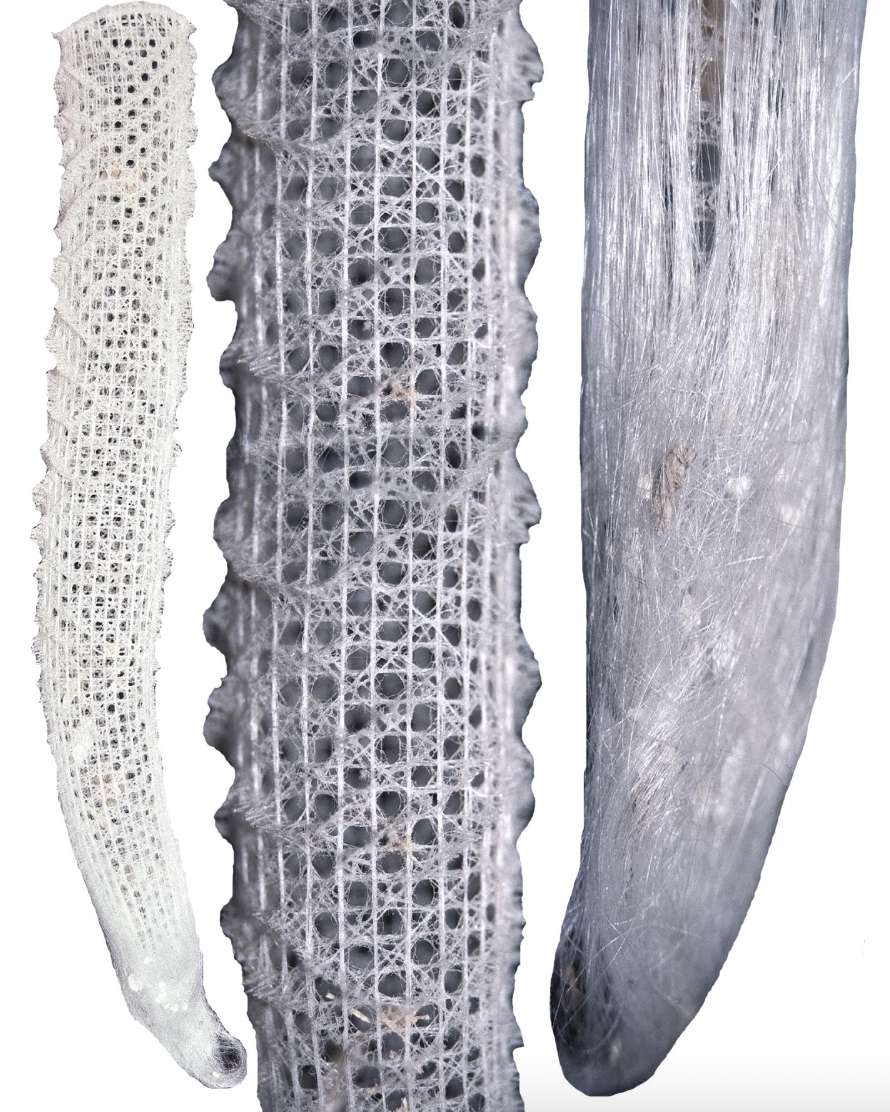
What Phylum and class does this skeleton belong to? Describe its habitat and feeding.
Phylum Porifera
Class Hexactinellida
Habitat: attached to structures, deep reef, deep-water mud
Feeding: microfilter
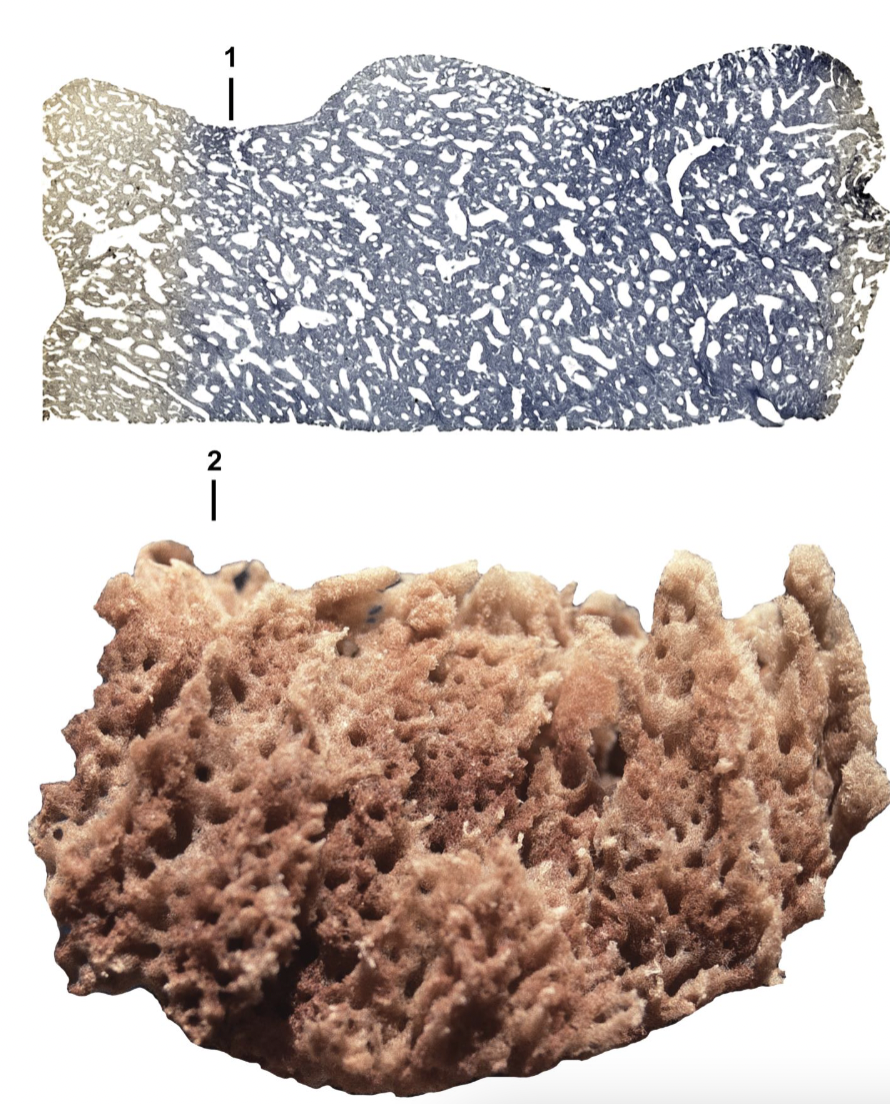
What phylum and class does this organism belong to? What does the image labeled “1” depict? Describe this organism’s habitat and feeding.
Phylum Porifera
Class Demospongiae
1 = slide showing leuconoid plan
Habitat: attached to structure, reefs
Feeding: microfilter
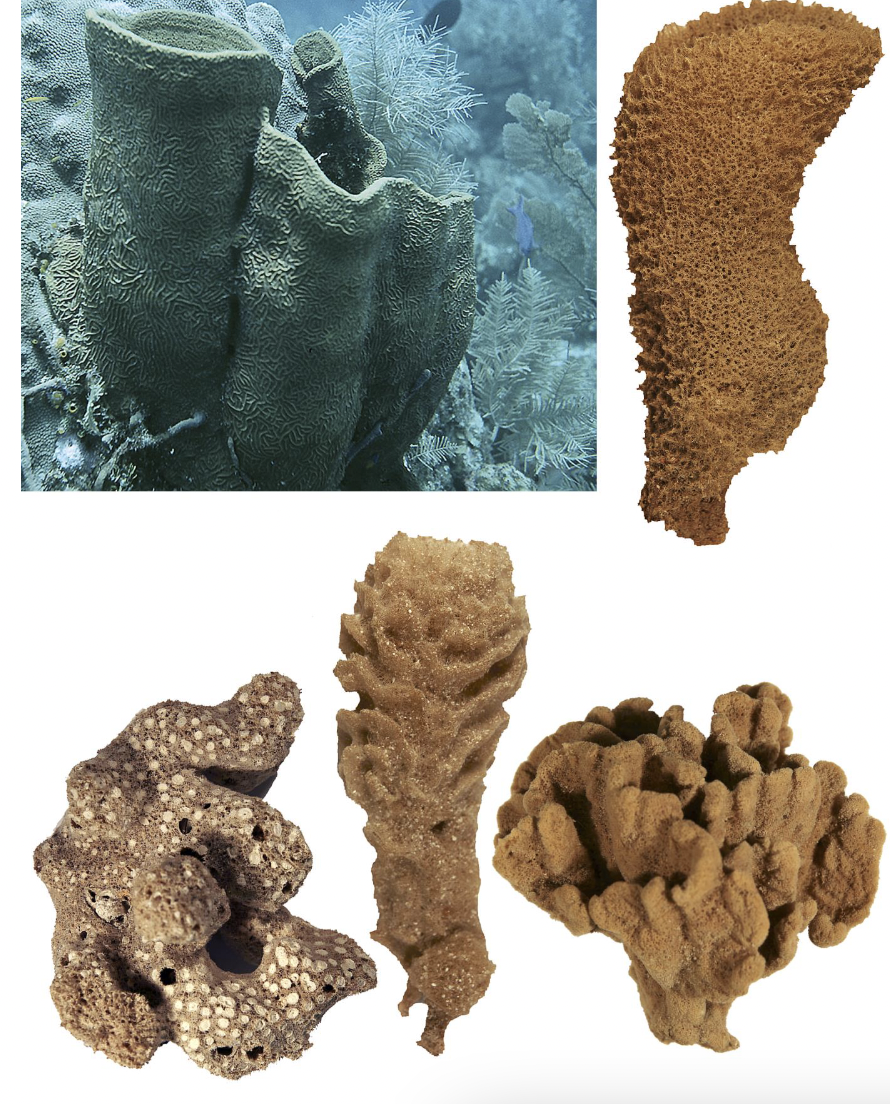
These sponges are in Phylum Porifera and Class Demospongiae. What is an easy way to tell they are in this class?
Their size- many of the larger/”hand-sized” sponges in this lab are in that class.
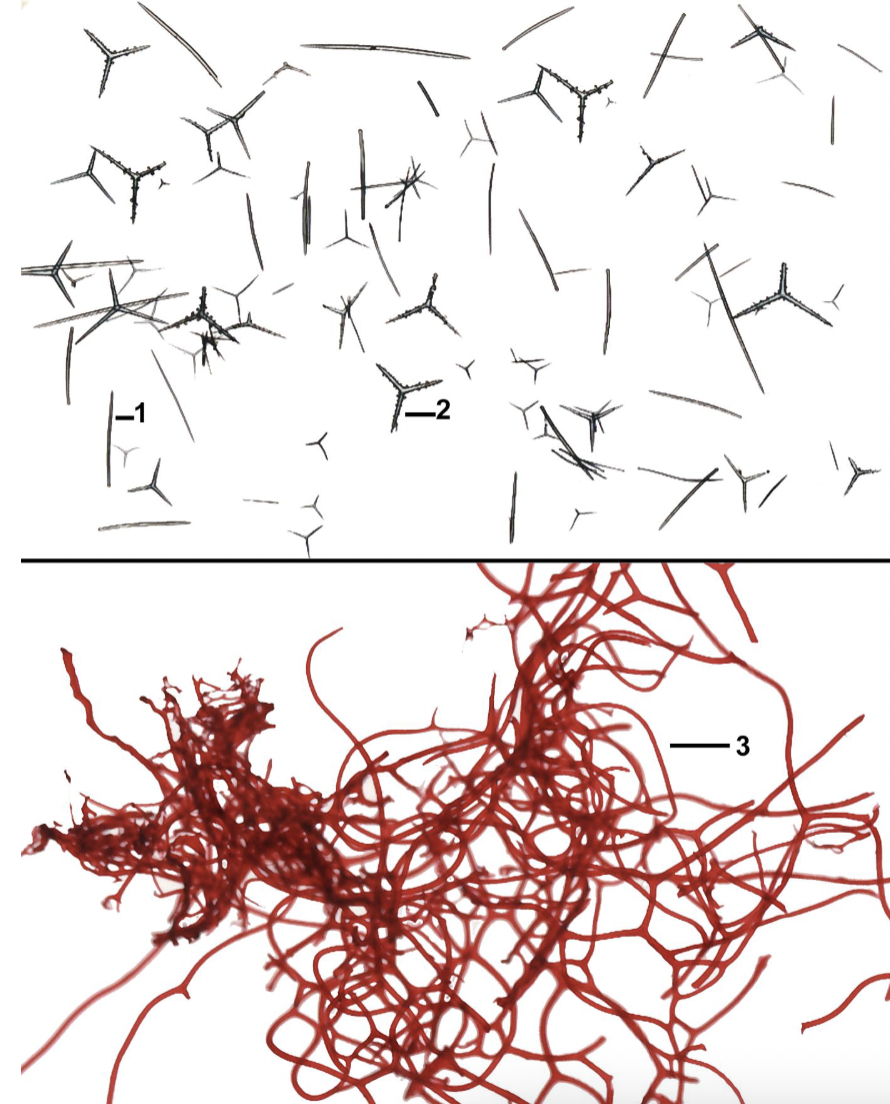
Correctly identify 1, 2, and 3.
monaxon spicules
triaxon spicules
spongin fibers
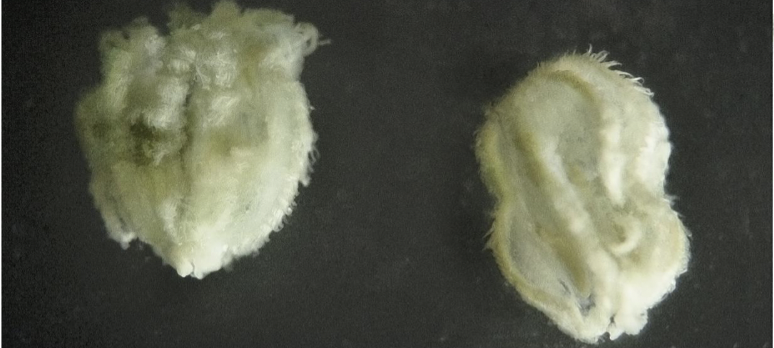
What phylum and order does this organism belong to? Describe its habitat and feeding.
Phylum Ctenophora
Order Cydippida
Habitat: planktonic
Feeding: carnivore (eats zooplankton)
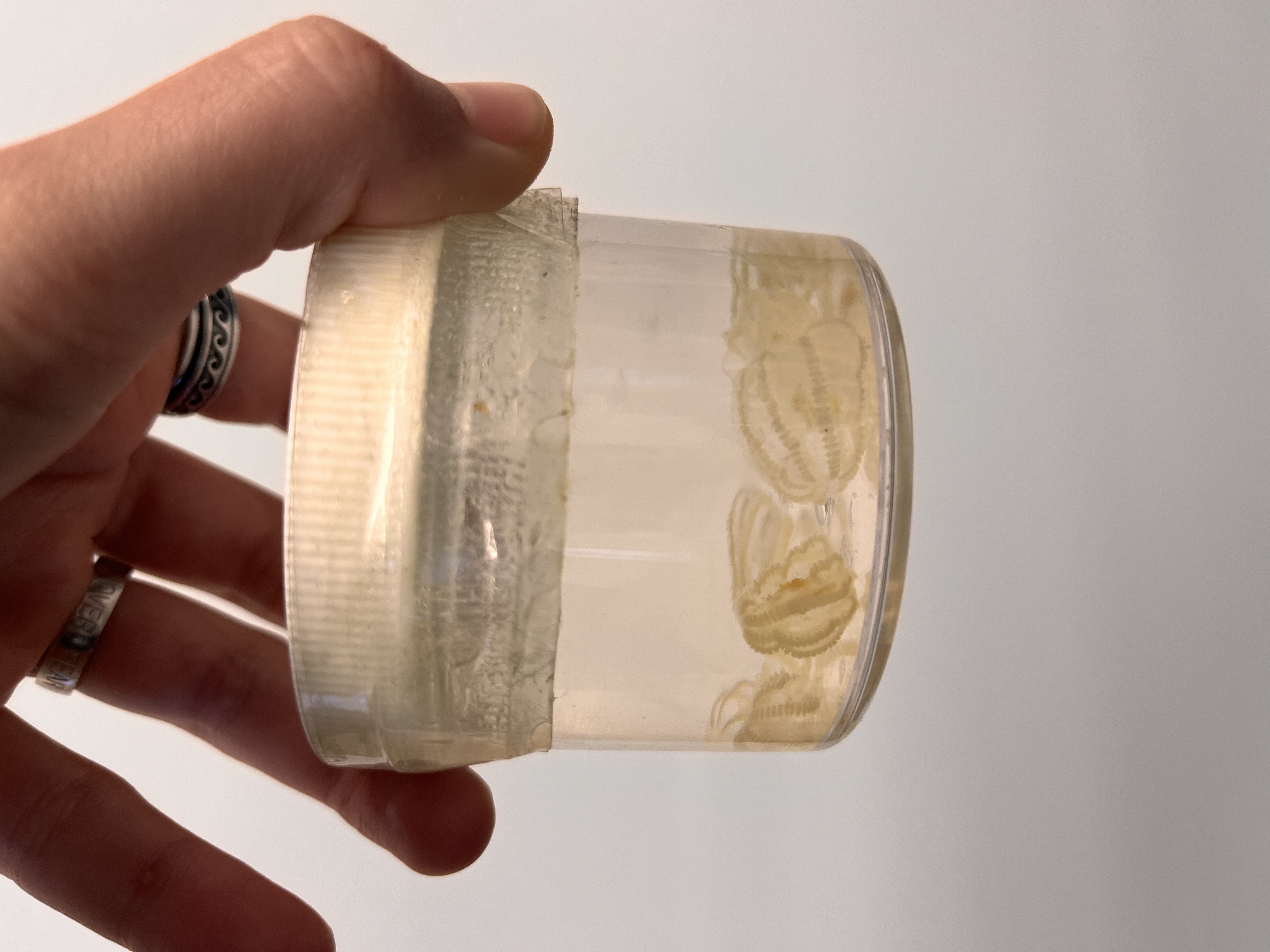
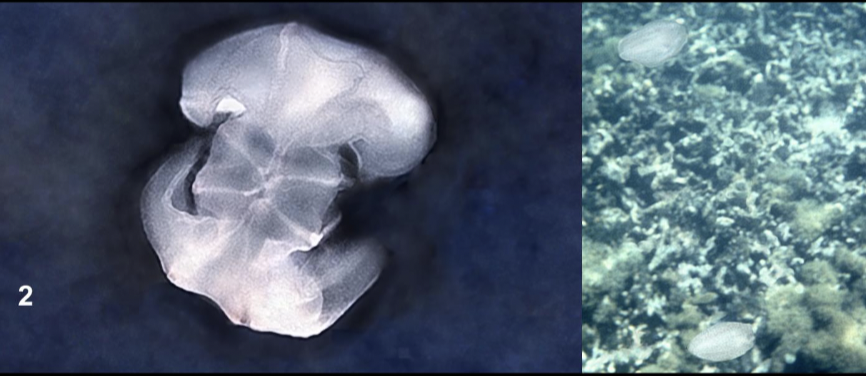
What phylum and order does this organism belong to? Describe its habitat and feeding.
Phylum Ctenophora
Order Lobata
Habitat: planktonic
Feeding: carnivore (eats zooplankton)
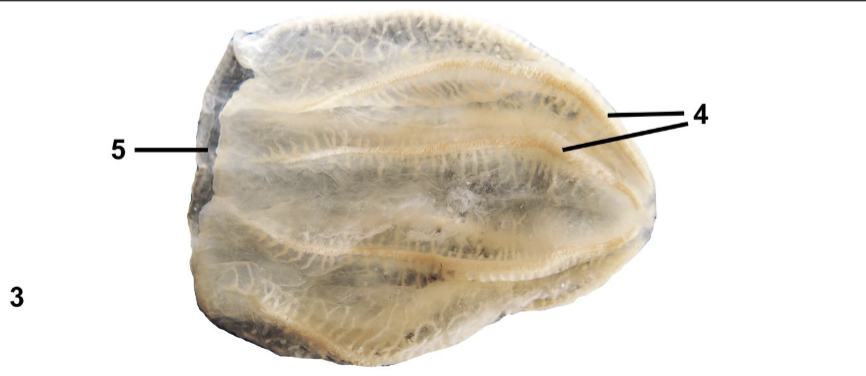
What phylum and order does this organism belong to? Describe its habitat and feeding.
Phylum Ctenophora
Order Beroida
Habitat: planktonic
Feeding: carnivore on other ctenophores
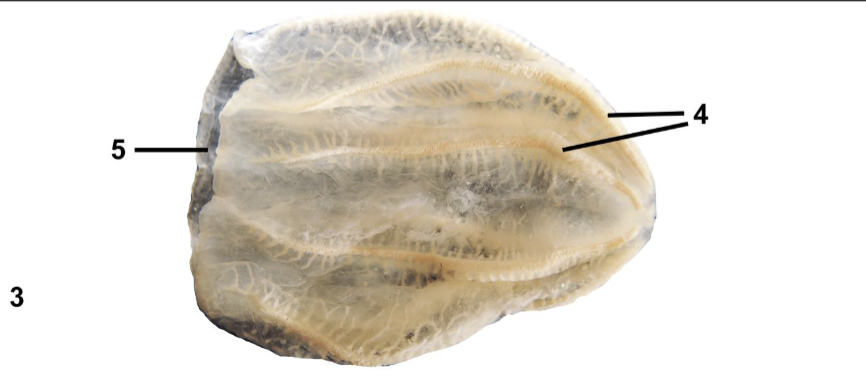
This jellyfish is in order Beroida. Name the parts labeled 4 and 5
ctens
mouth

What phylum, subphylum, class, and order does this organism belong to?
Phylum Cnidaria
Subphylum Medusozoa
Class Hydrozoa
Order Anthoathecata
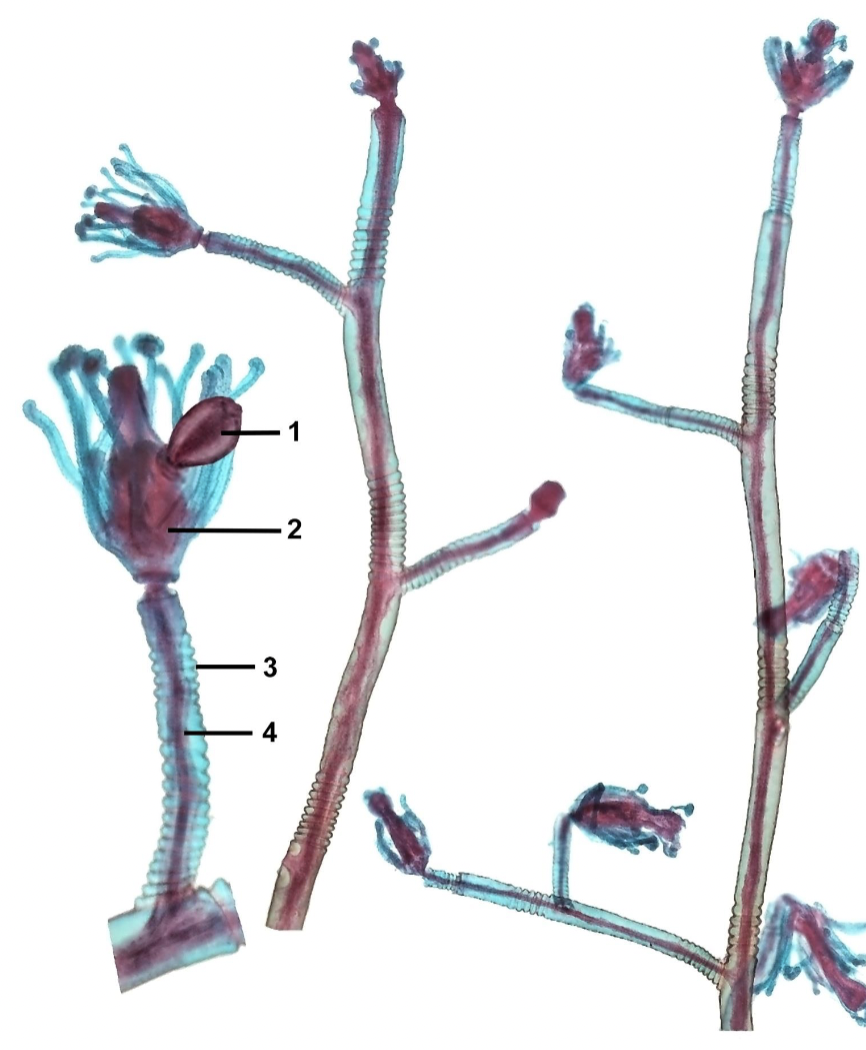
This hydrozoan is in order anthoathecata, and is in the colonial polyp stage. Describe its habitat and feeding.
Habitat: attached to structure as a polyp, planktonic as medusa
Feeding: carnivore

Identify all of the labeled parts in this image.
Gonophore
Gastrozooid
Perisarc
Coenosarc
What are perisarcs and coenosarcs?
The perisarc is the structure that hydrozoan polyps attach to, and in some species grows around the polyp for them to retreat into to avoid predation. The coenosarc is a living structure, and serves as the direct attachment point between the perisarc and the polyp.
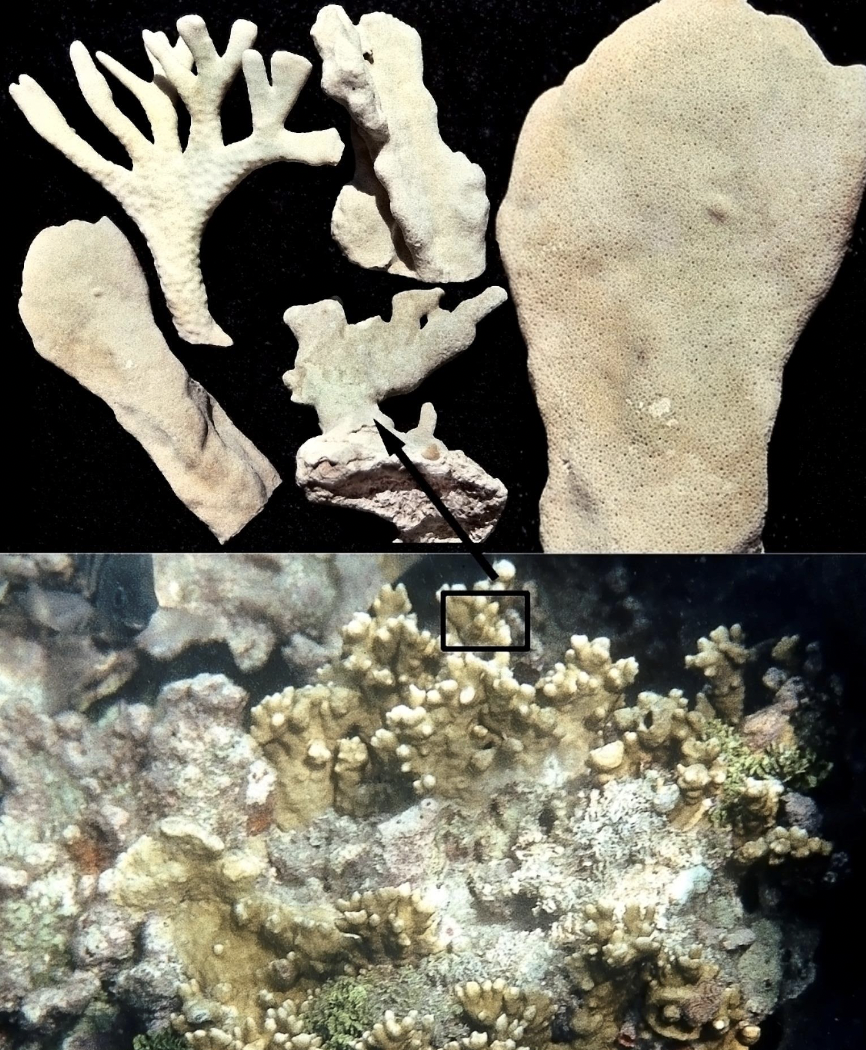
Classify this organism. What stage is it in?
This organism is in phylum Cnidaria, subphylum Medusozoa, class Hydrozoa, and order Anthoathecata.
It is the colonial polyp stage of fire coral Millepora
Match the image of typical Anthoathecata medusae
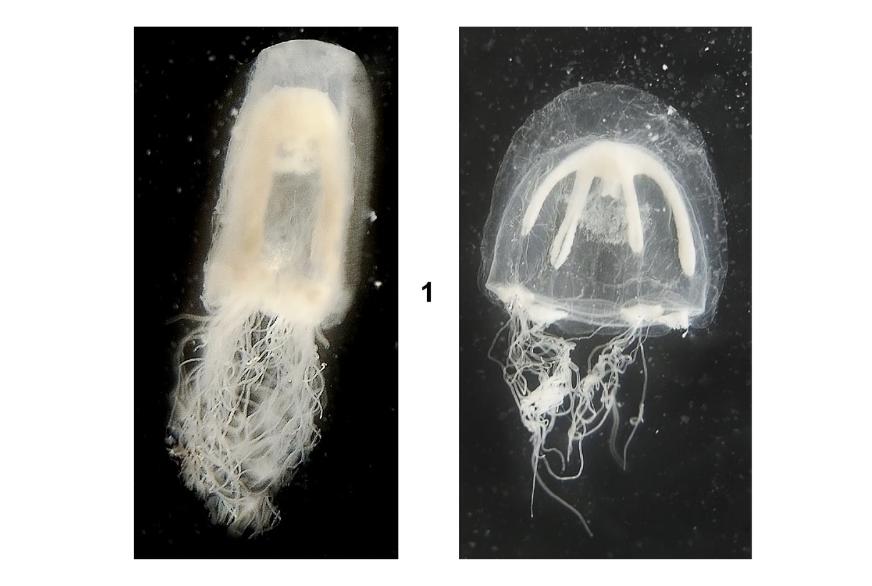
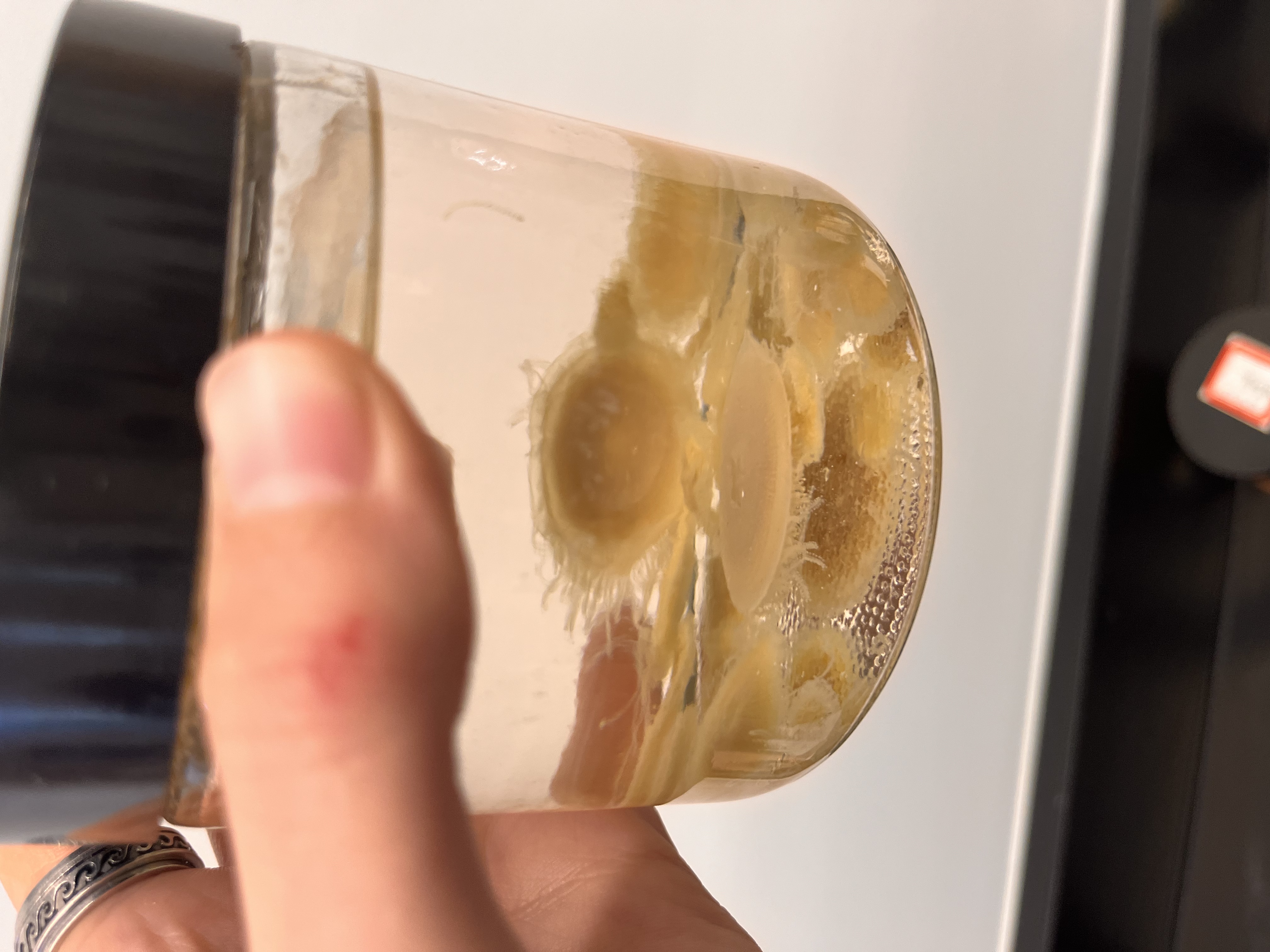
Match the image of the blue button Porpita, a floating coral polyp colony
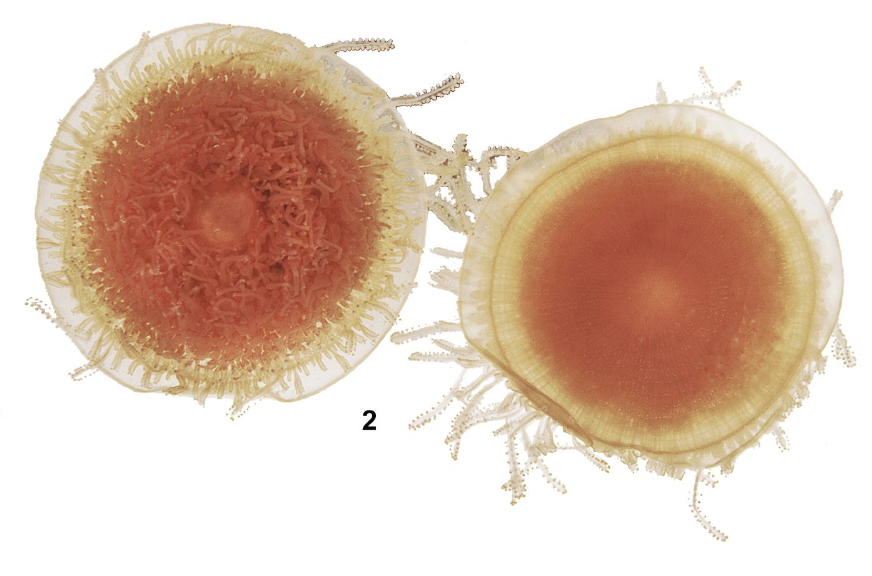
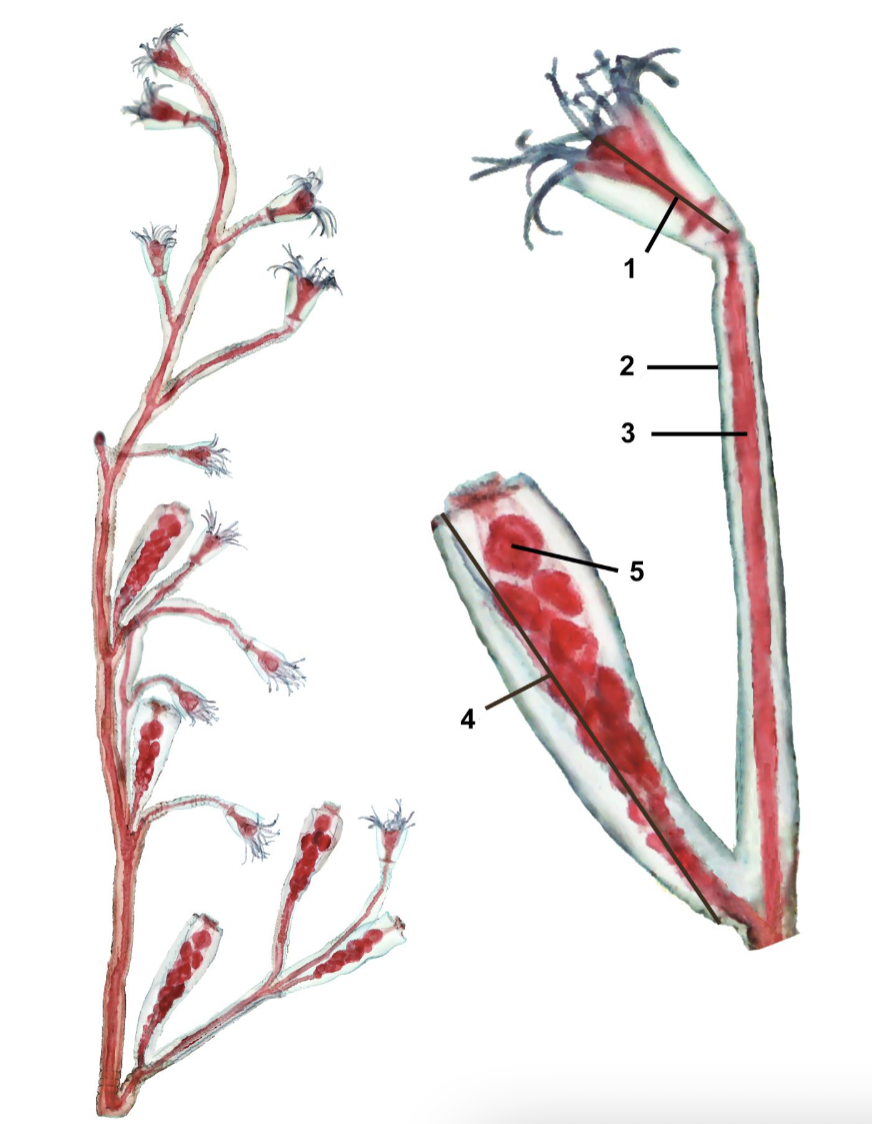
What phylum, subphylum, class, and order is this colonial polyp? Describe their habitat and diet
Phylum Cnidaria
Subphylum Medusozoa
Class Hydrozoa
Order Lepthothecata
Habitat: attached to structures as polyp, planktonic as medusa
Feeding: carnivore
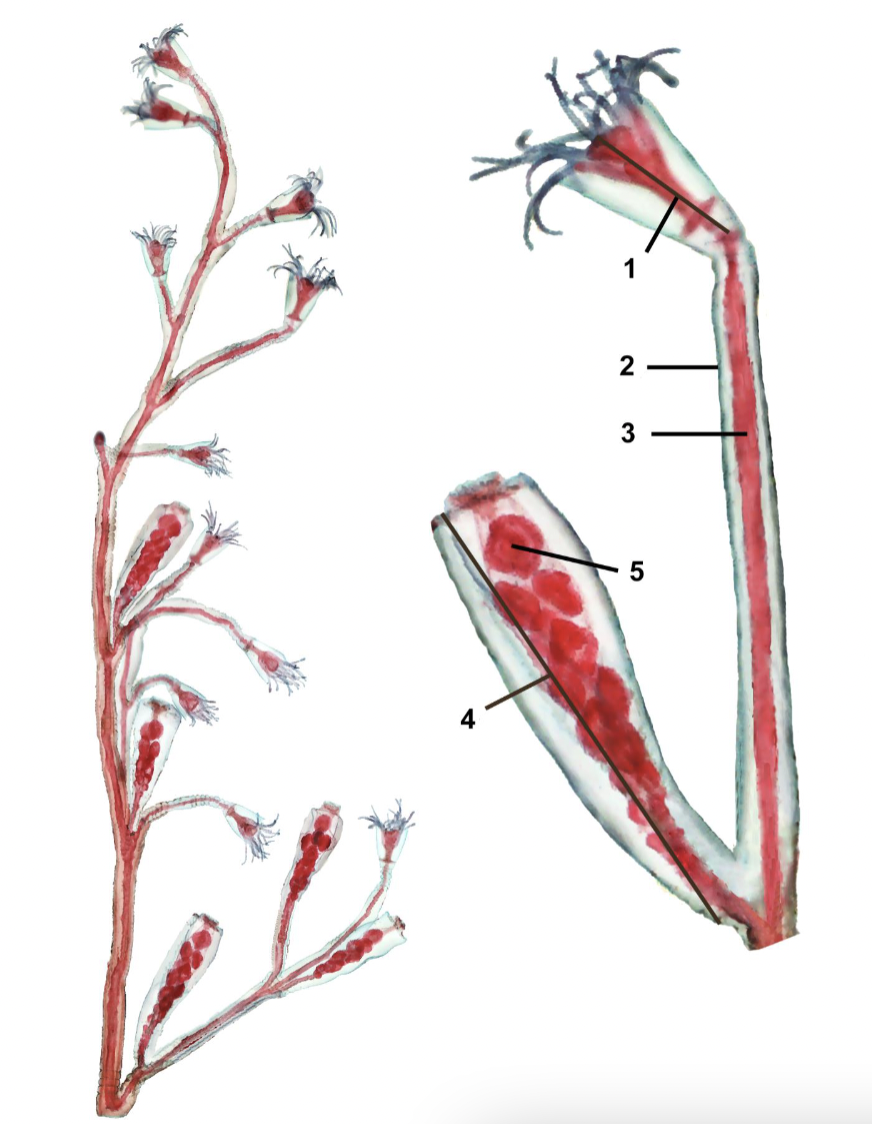
Name all of the numbered parts of this colonial polyp leptothecatan.
Gastrozooid
Perisarc
Coenosarc
Gonozooid
Developing medusa
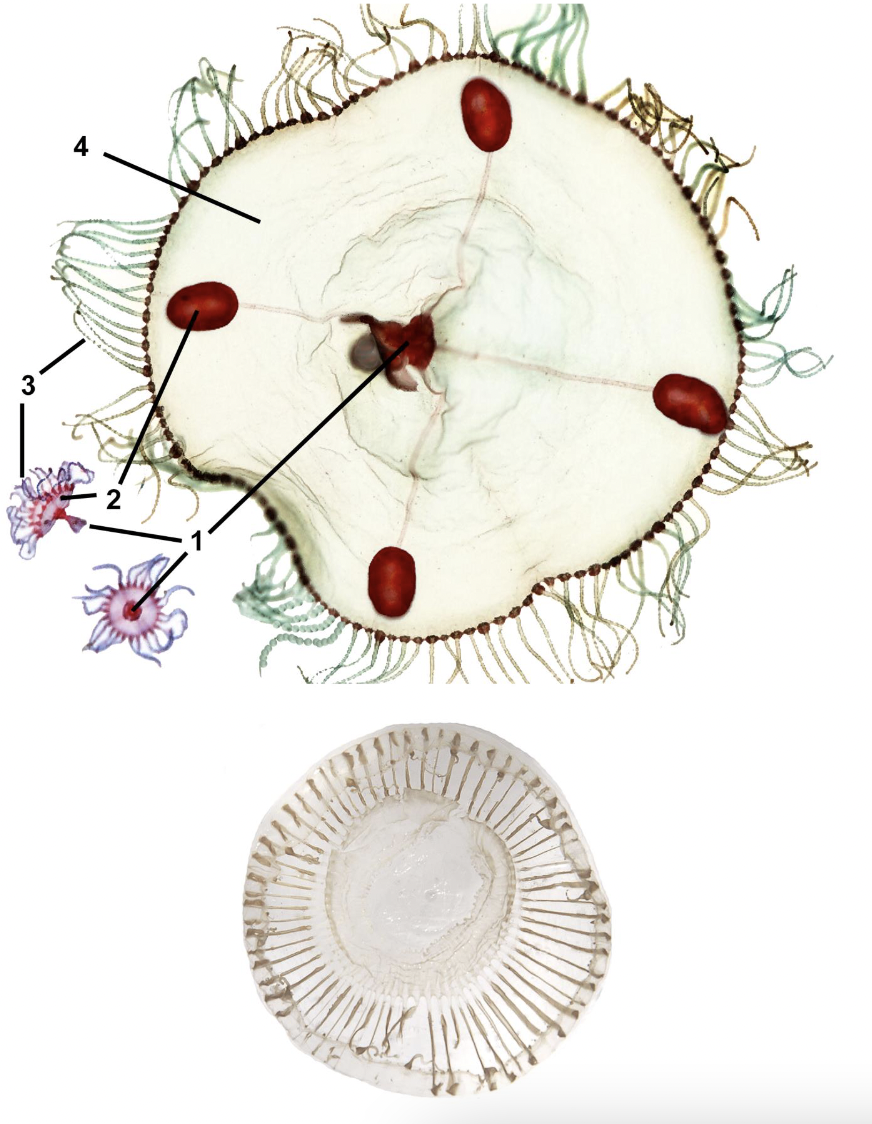
What phylum, subphylum, class, and order is this medusa? Describe their habitat and diet.
Phylum Cnidaria
Subphylum Medusozoa
Class Hydrozoa
Order Lepthothecata
Habitat: attached to structures as polyp, planktonic as medusa
Feeding: carnivore
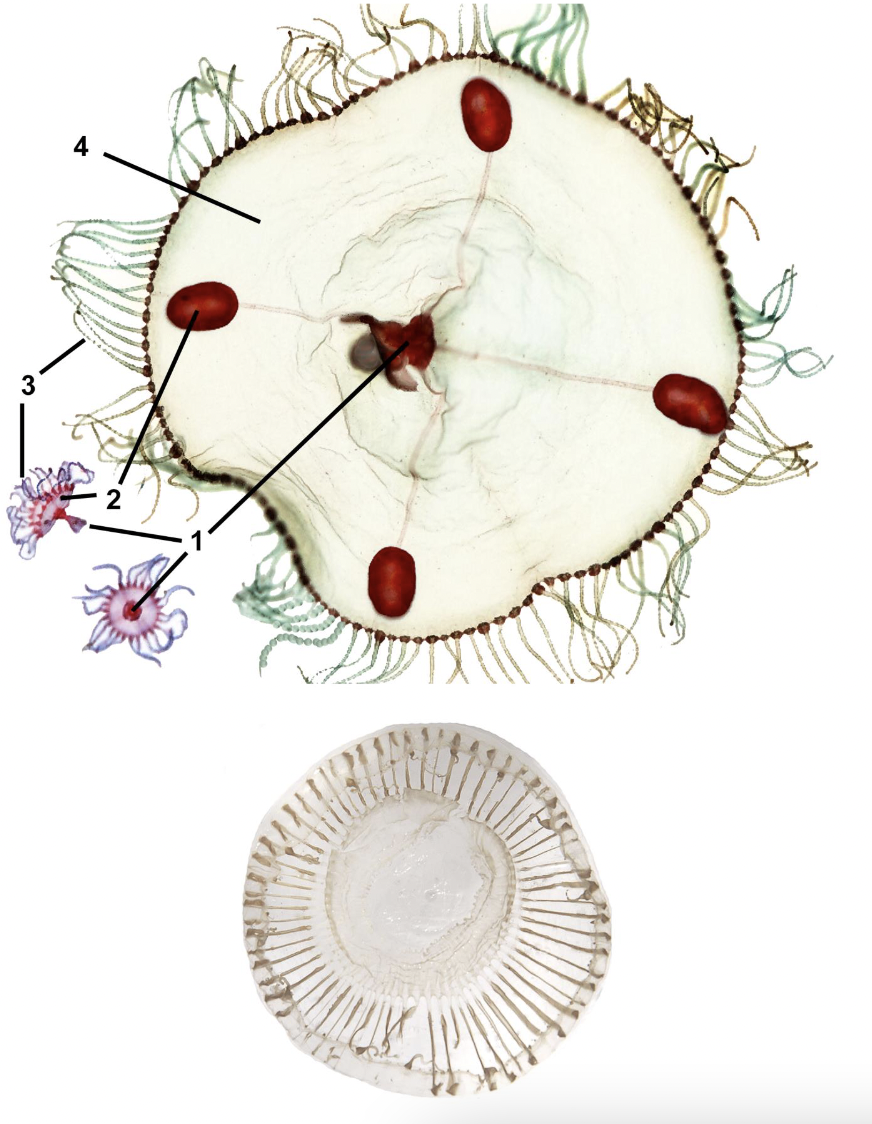
Label all of the numbered parts of this leptothecata medusa
Manubrium and mouth
Gonad
Tentacles
Exumbrella
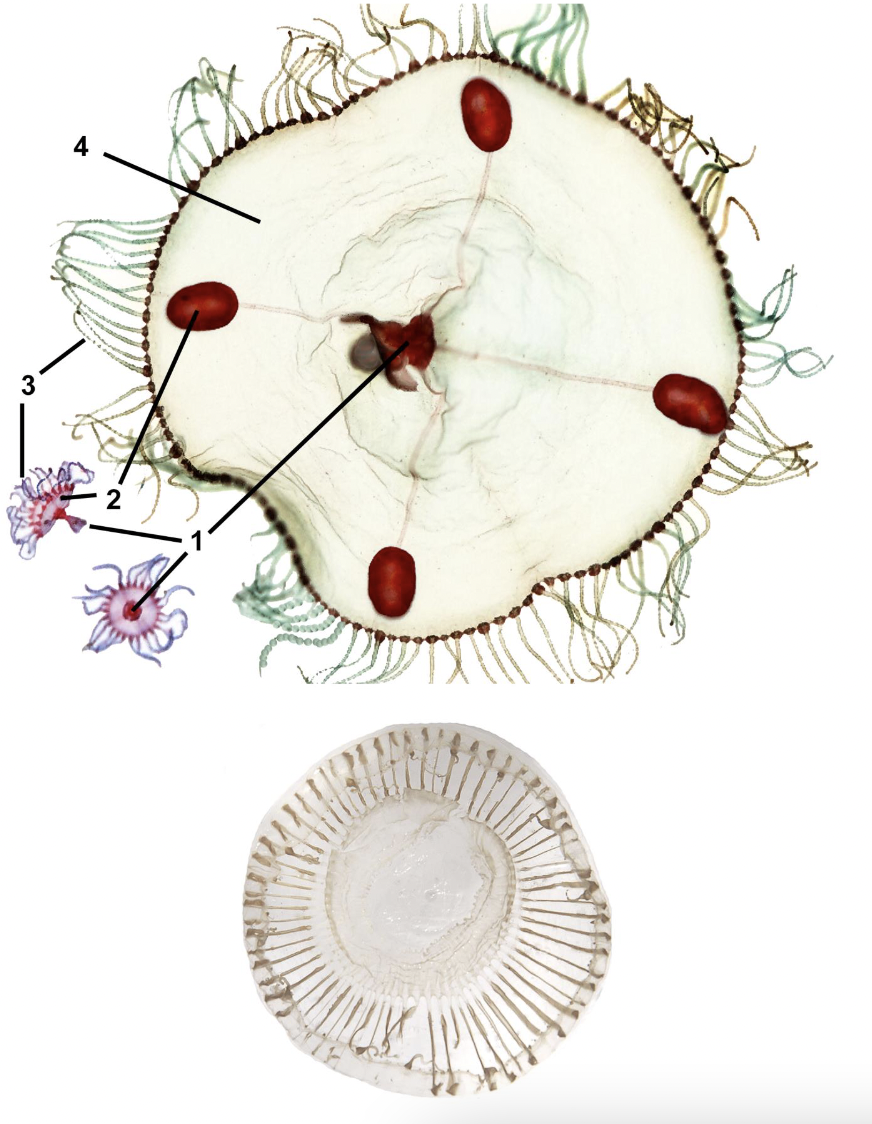
Match this leptothecata medusa to the correct colonial polyp.
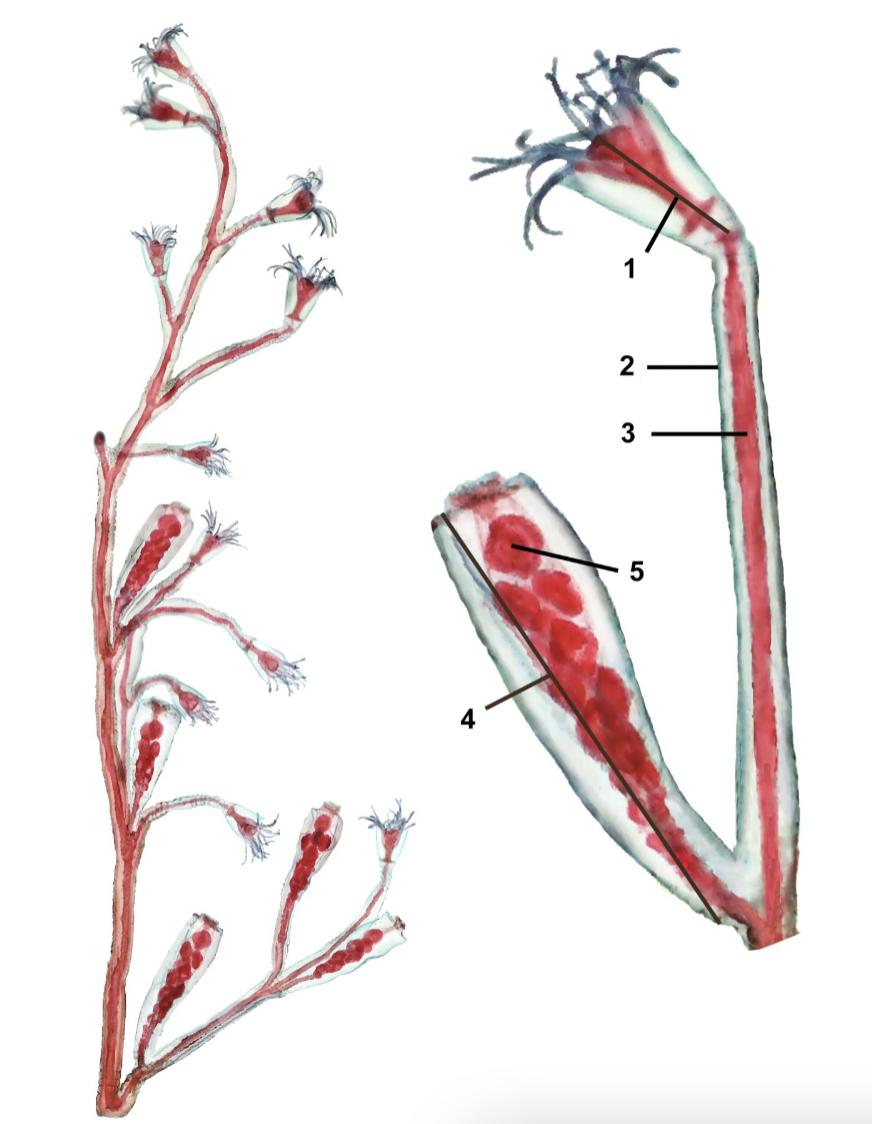
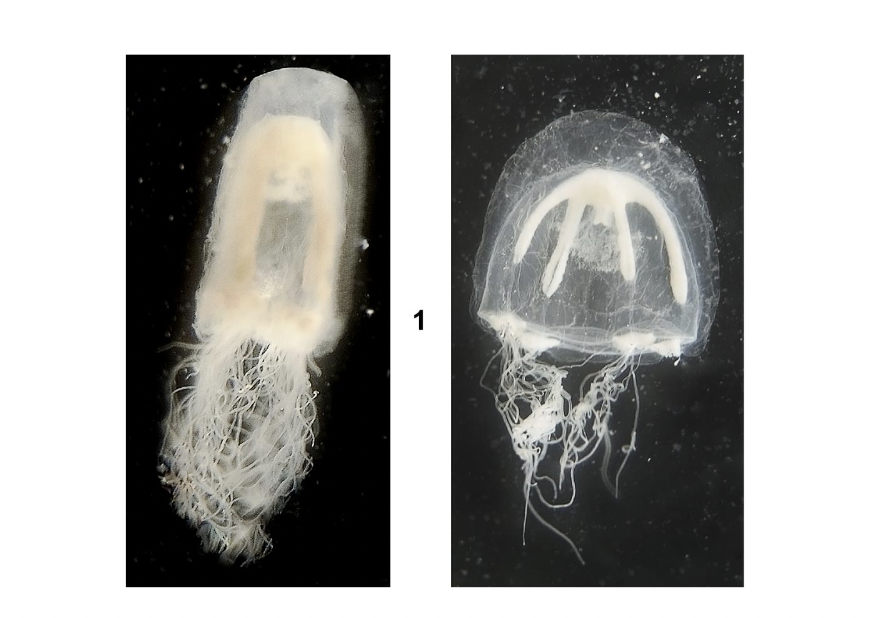
Match this anthoathecatan medusa to the correct colonial polyp stage.
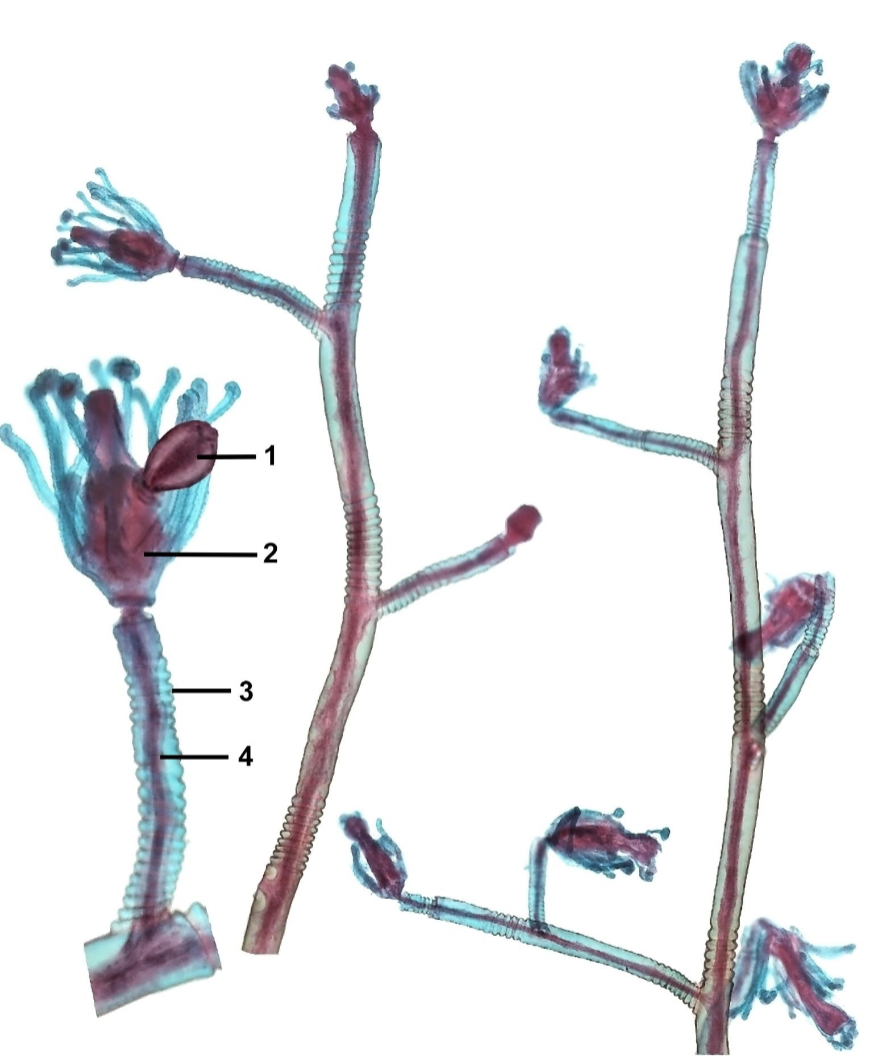
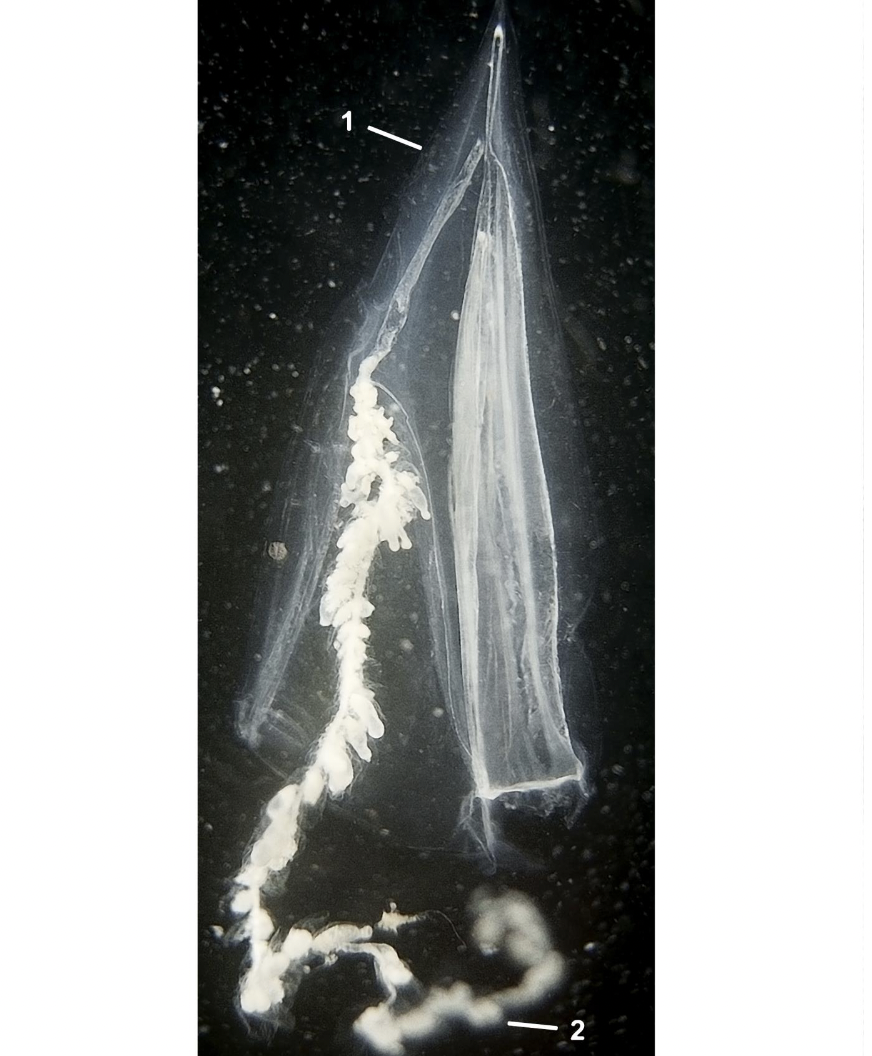
What phylum, subphylum, class, and order is this medusa? Describe their habitat and diet.
Phylum Cnidaria
Subphylum Medusozoa
Class Hydrozoa
Order Siphonophorae
Habitat: Planktonic
Feeding: Carnivore
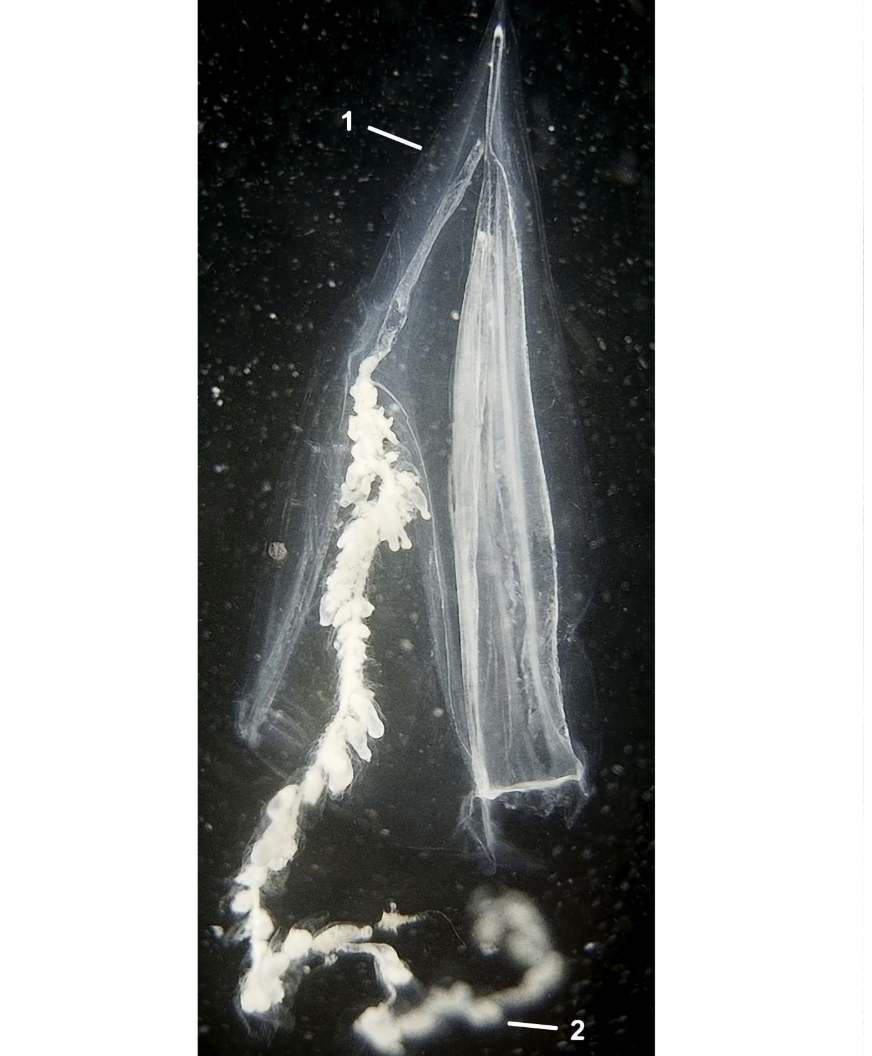
Correctly identify the two labeled parts in this image.
Swimming bell
Polyp colony
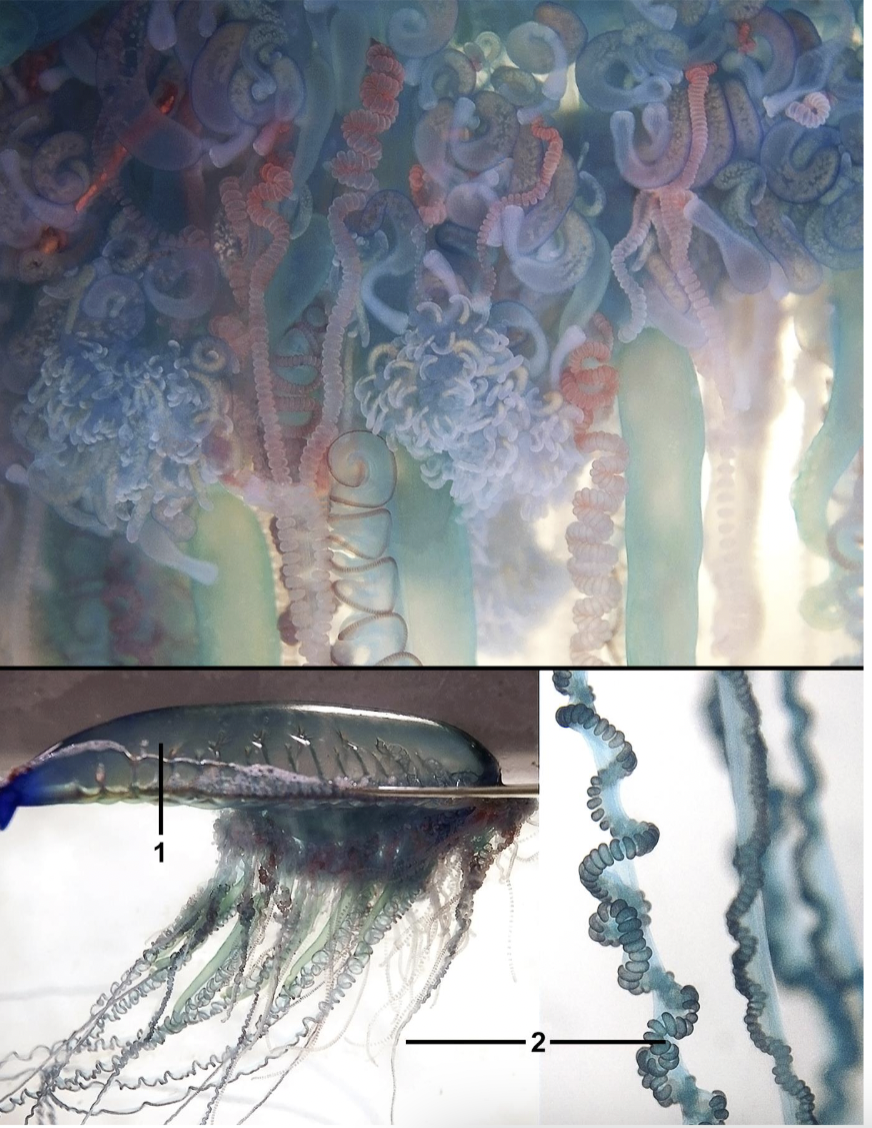
What phylum, subphylum, class, and order is this organism? Describe their habitat and diet.
Phylum Cnidaria
Subphylum Medusozoa
Class Hydrozoa
Order Siphonophorae
Habitat: Planktonic
Feeding: Carnivore

Correctly identify the two labeled parts in this image.
Pneumatophore
Tentacle
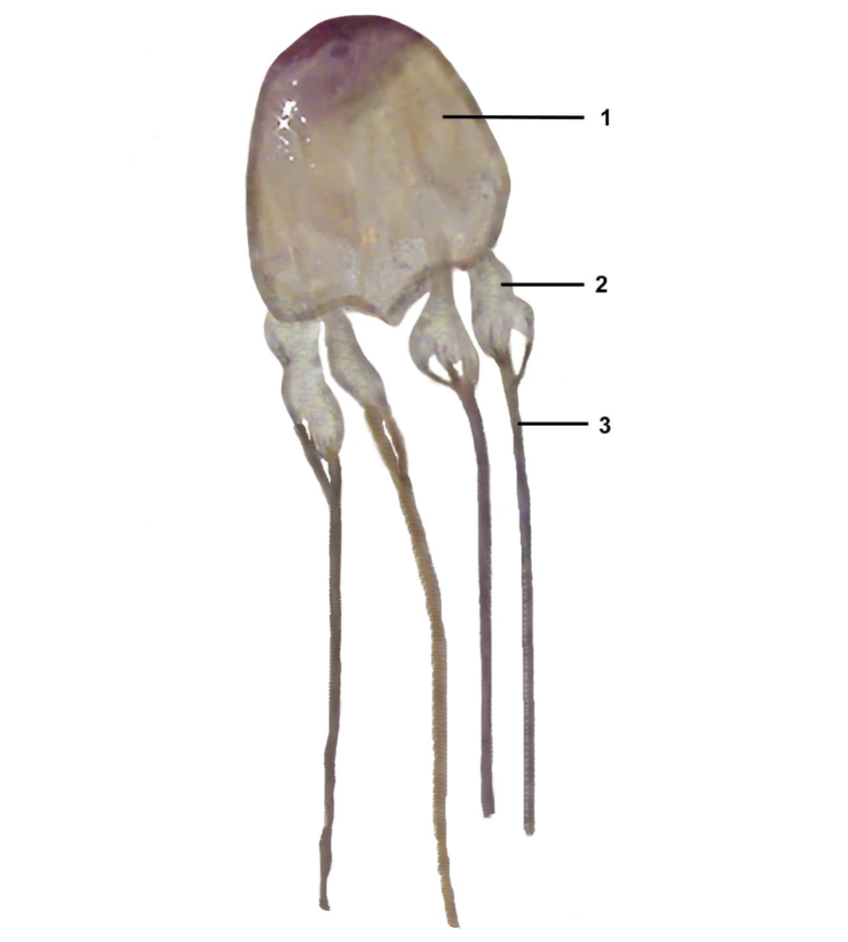
What phylum, subphylum, and class is this organism? Name all the labeled parts of this organism.
Phylum Cnidaria
Subphylum medusozoa
Class cubozoa
Exumbrella
Pedalia
Tentacles
If an organism is in class cubozoa, what phylum and subphylum is it? What habitat and feeding do they use?
Phylum Cnidaria
Subphylum medusozoa
Habitat: attached to structure as a polyp, planktonic as medusa
Feeding: carnivore
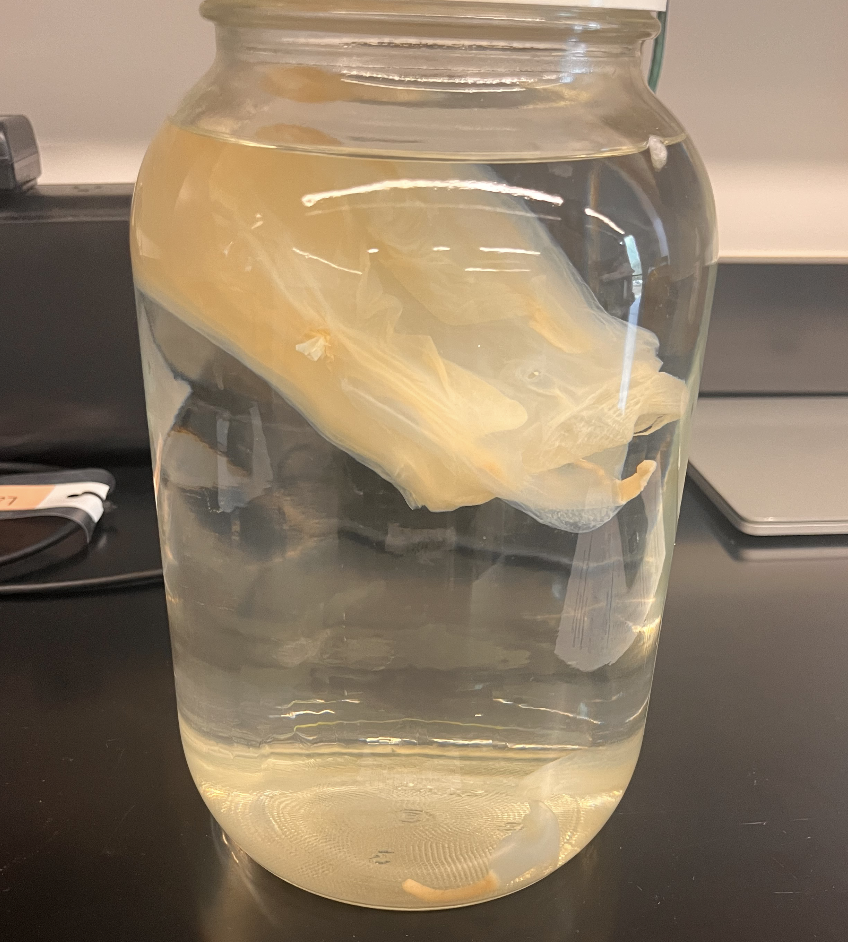
What phylum, subphylum, and class is this organism?
Phylum Cnidaria
Subphylum Medusozoa
Class Cubozoa

What phylum, subphylum, class, and subclass is this polyp?
This polyp is in:
Phylum Cnidaria
Subphylum Medusozoa
Class Scyphozoa
Subclass Discomedusae
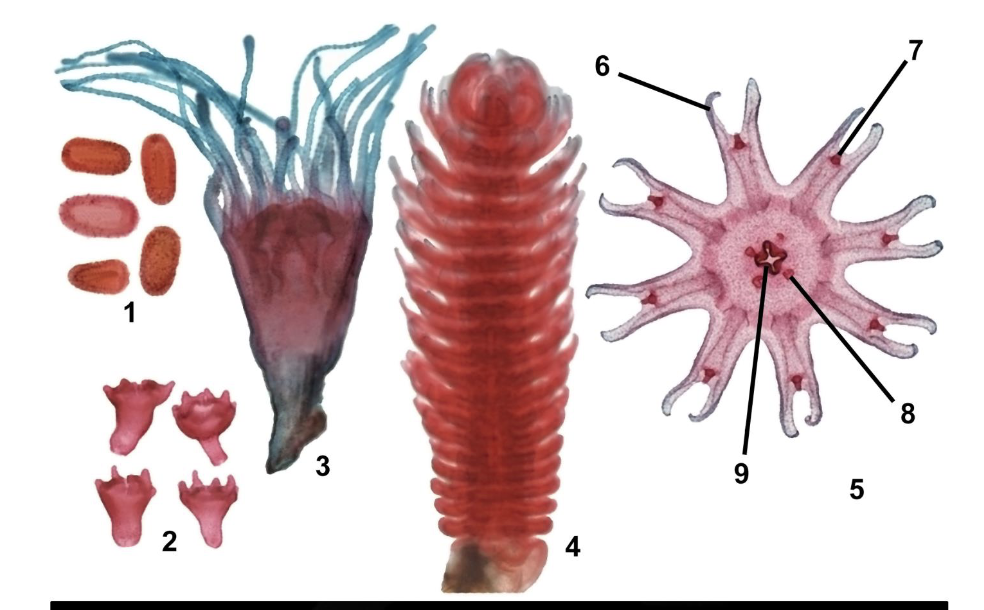
What are all the labeled parts to this organism?
Planula
Scyphula (planula just settled)
Scyphistoma (polyp)
Strobila
Ephyra
Lappet
Rhopalium
Oral arm
Manubrium and mouth
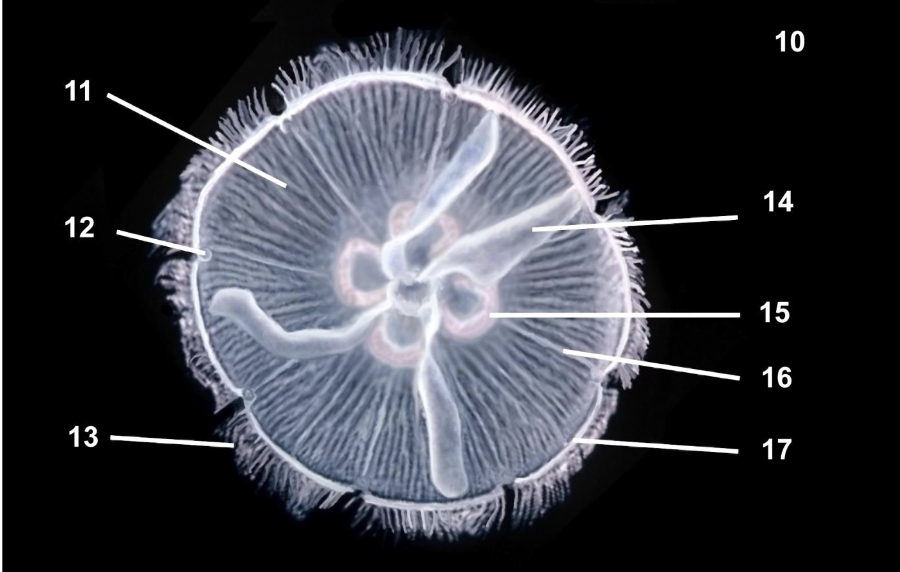
What are all the labeled parts to this organism?
Medusa
Exumbrella (bell)
Rhopalium
Tentacles
Oral arm
Gonads
Radial canals
Ring canal
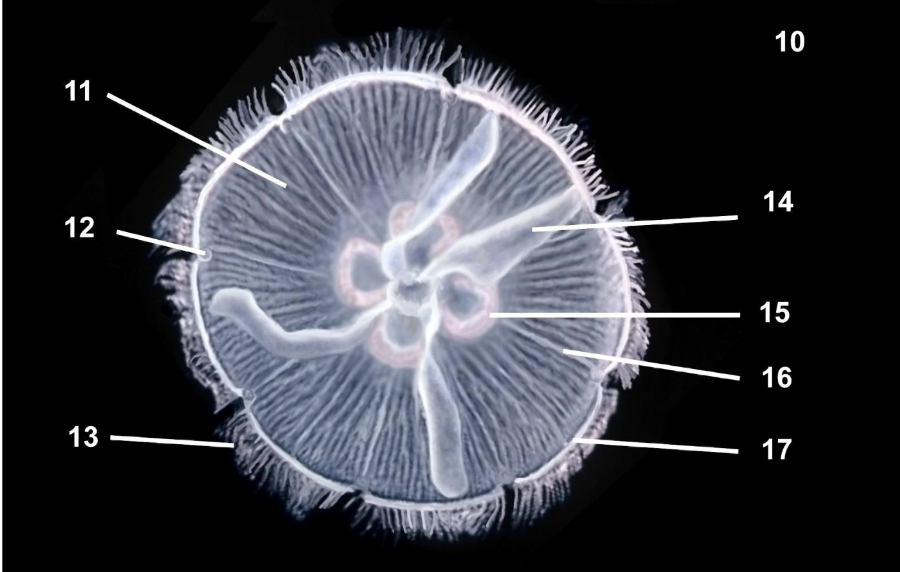
What phylum, subphylum, class, and subclass is this organism?
This medusa diagram is:
Phylum Cnidaria
Subphylum Medusozoa
Class Scyphozoa
Subclass Discomedusae

What phylum, subphylum, class, and subclass is this organism?
Phylum Cnidaria
Subphylum Medusozoa
Class Scyphozoa
Subclass Discomedusae
It is the same as this image.
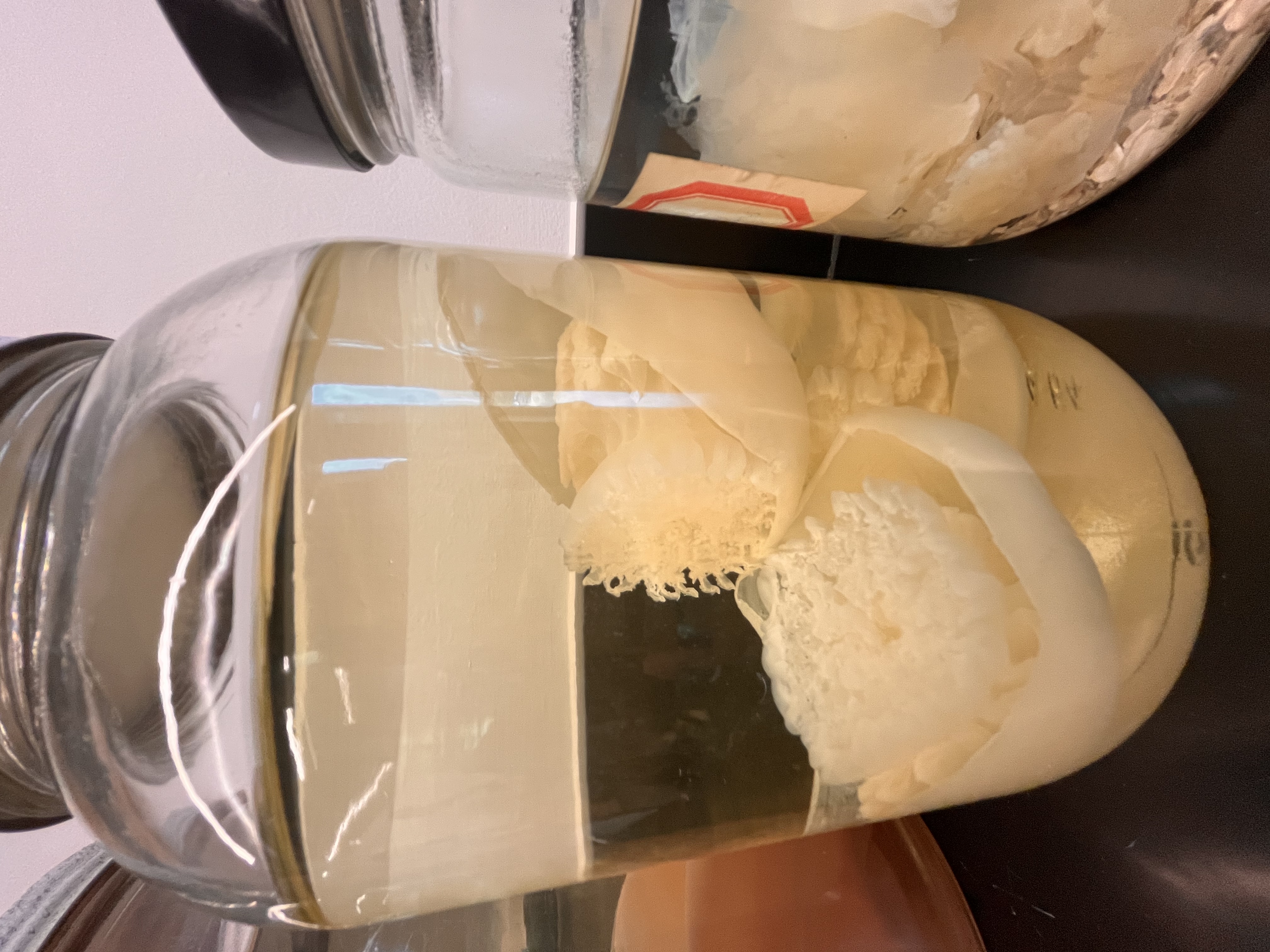
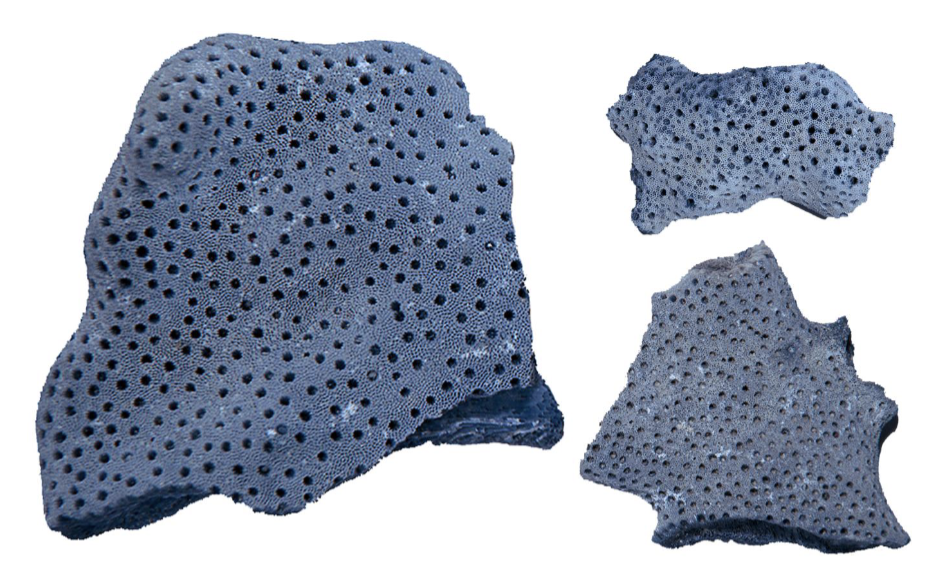
Classify this organism:
Phylum: Cnidaria
Subphylum: Anthozoa
Class: Otocorallia
Order: Scleralcyonacea
If an organism is in subclass Discomedusae, what habitat and feeding does it have?
Habitat: attached to structure as polyp, planktonic as medusa
Feeding: carnivore
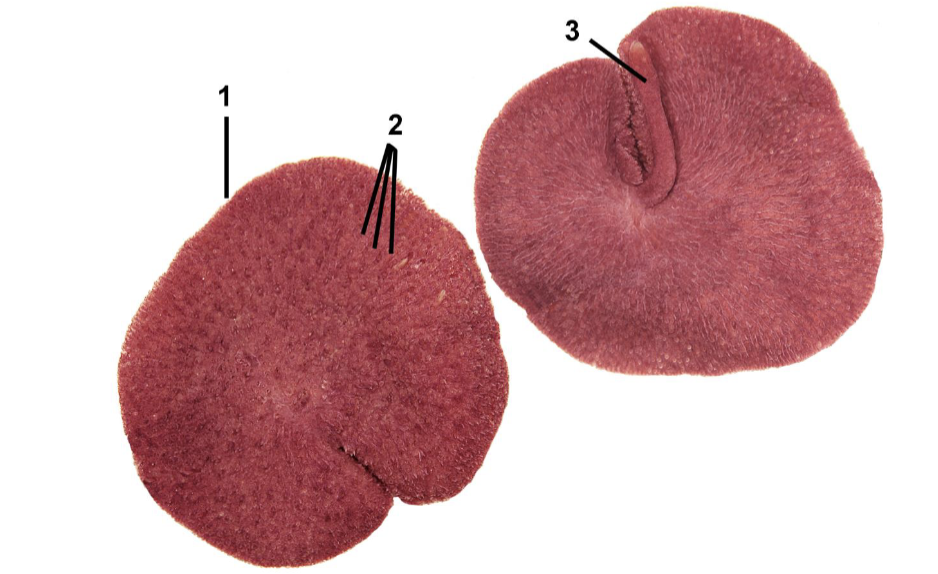
Classify this organism and identify the labeled parts
Phylum Cnidaria
Subphylum Anthozoa
Class Octocorallia
Order Scleralcyonacea
1. primary polyp; 2. secondary polyps; 3. sand anchor of primary polyp
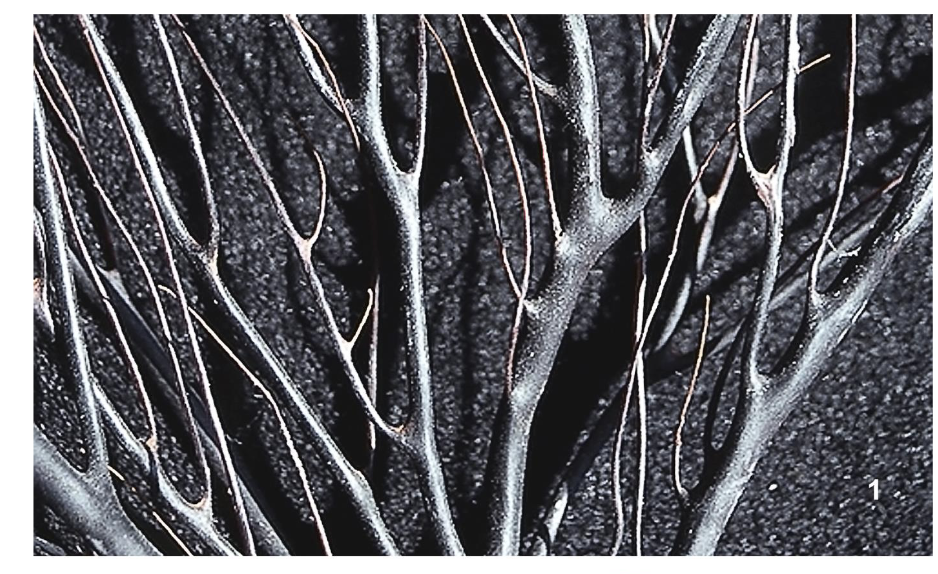
What is this?
Classified as: Cnidaria:Anthozoa:Octocorallia:Malacalcyonacea
It is a gorgonian protein skeleton forming axial rod (soft tissue removed)
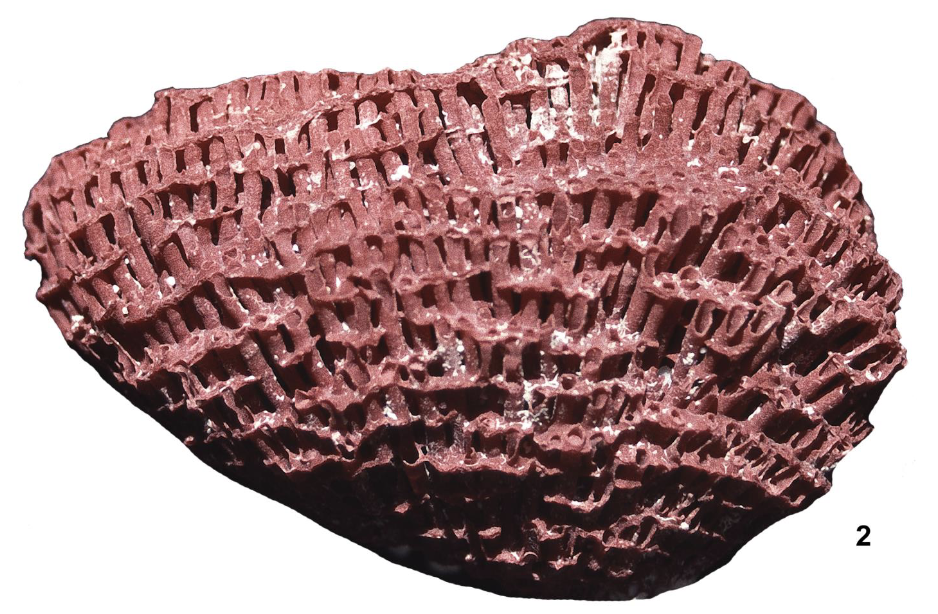
What is this?
Classified as: Cnidaria:Anthozoa:Octocorallia:Malacalcyonacea
It is the calcified skeleton of organ pipe coral
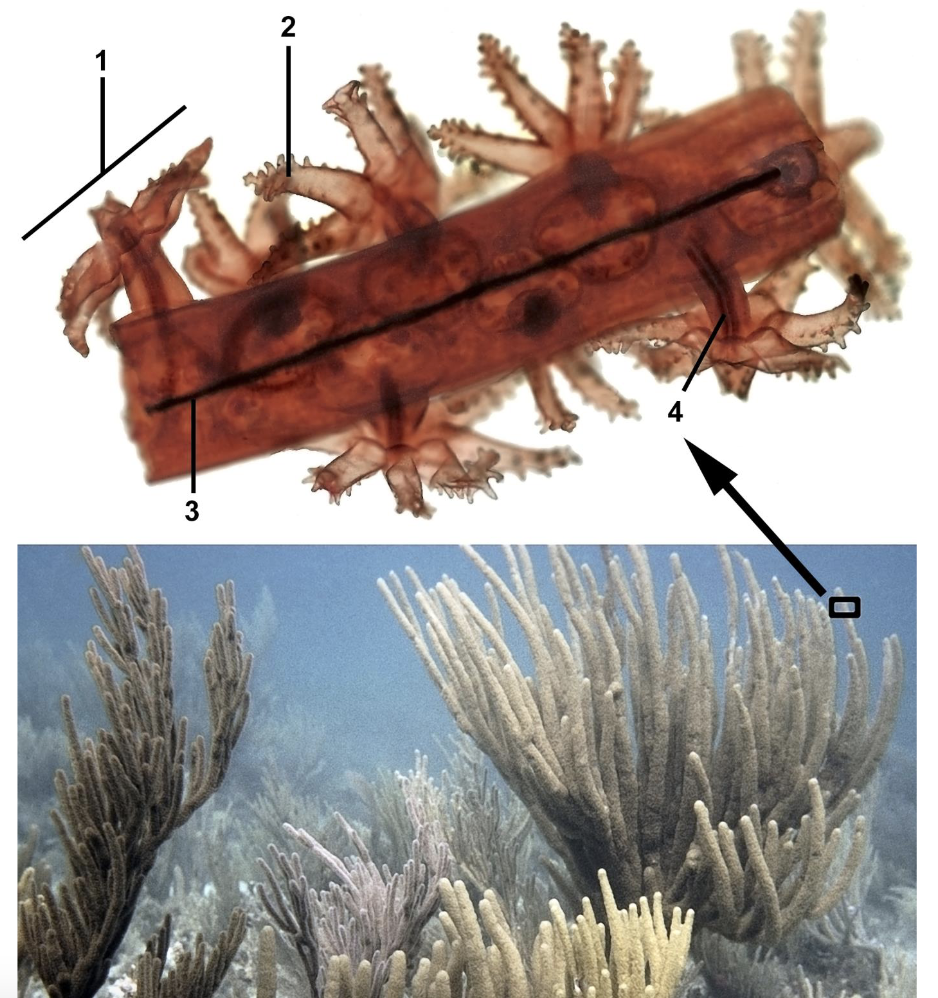
What is this? Identify the labeled parts.
Classified as:
Phylum Cnidaria
Subphylum Anthozoa
Class Octocorallia
Order Malacalcyonacea
1. polyp; 2. tentacle; 3. axial rod; 4. gastrovascular cavity
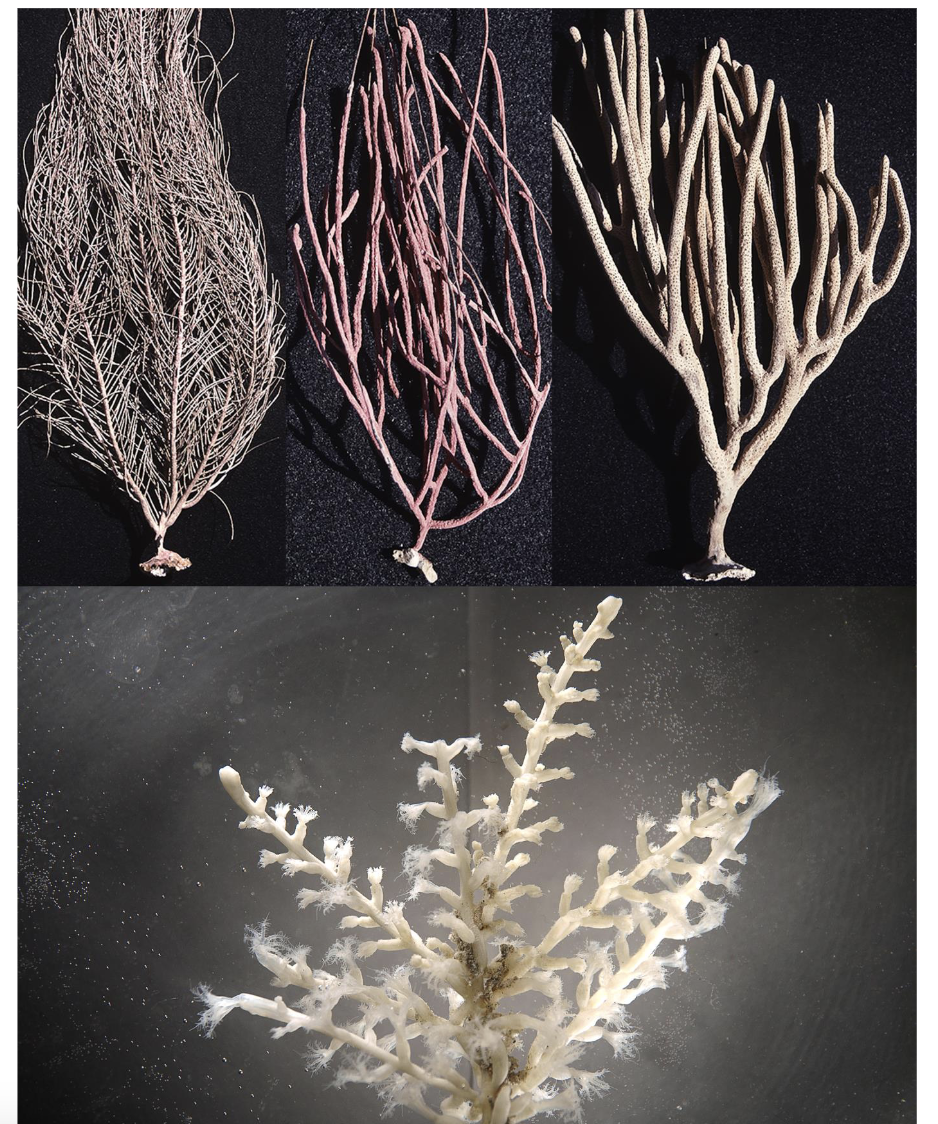
What is this?
Phylum Cnidaria
Subphylum Anthozoa
Class Octocorallia
Order Malacalcyonacea
So are these!
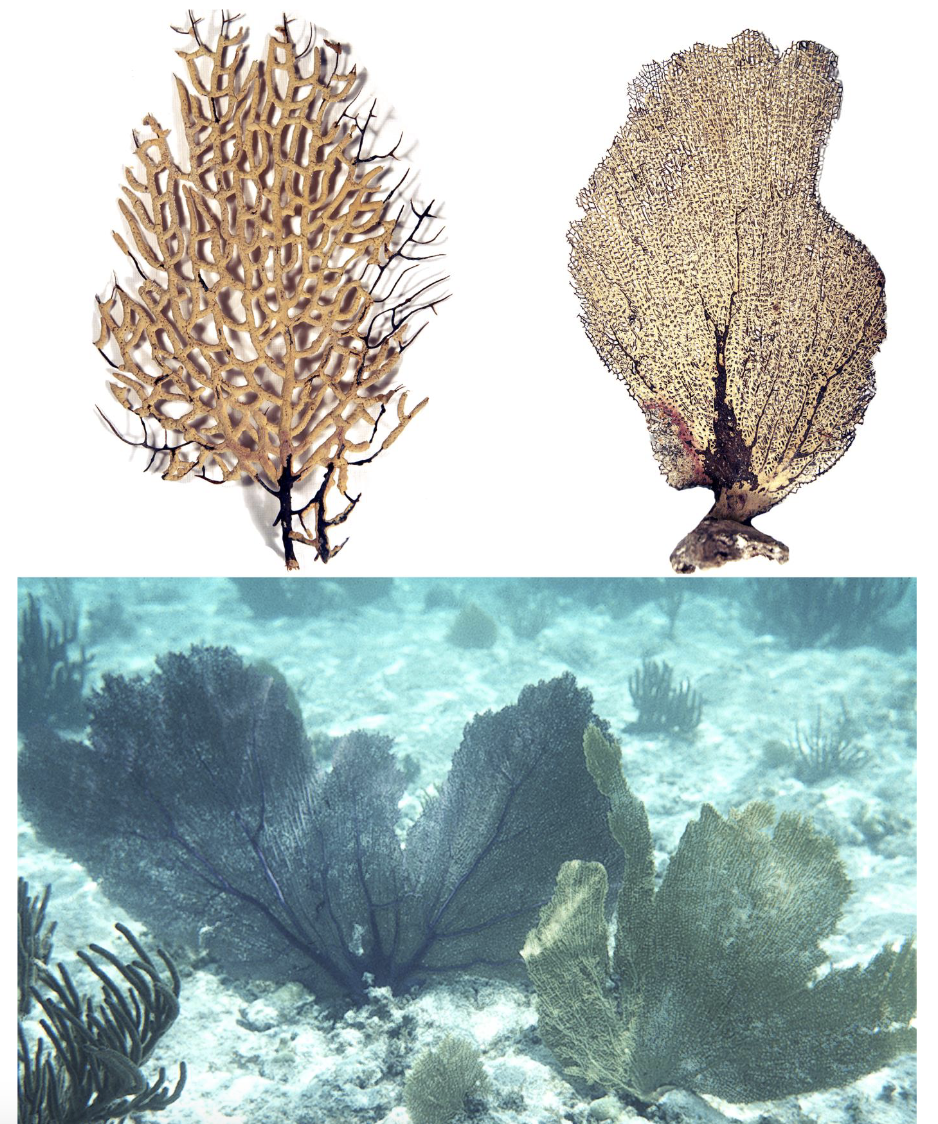
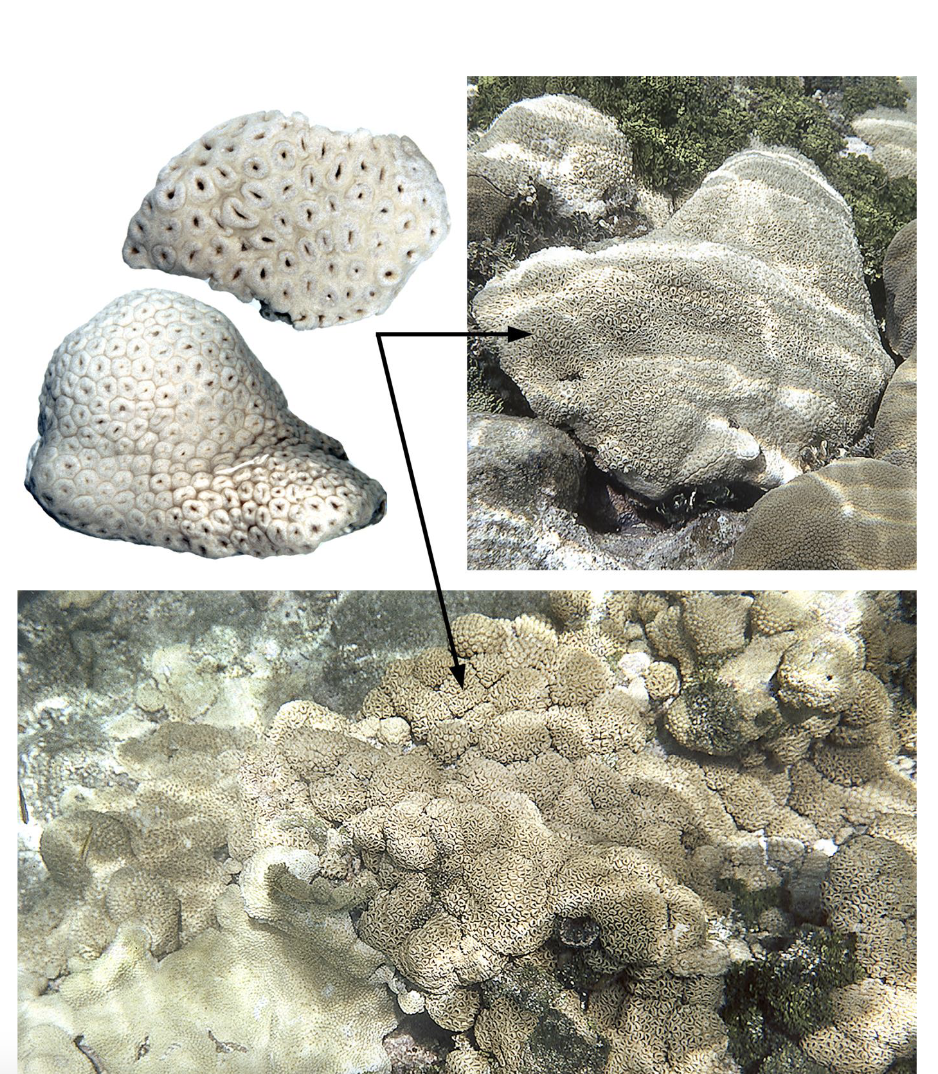
What are these?
Phylum Cnidaria
Subphylum Anthozoa
Class Hexacorallia
Order Zoantharia
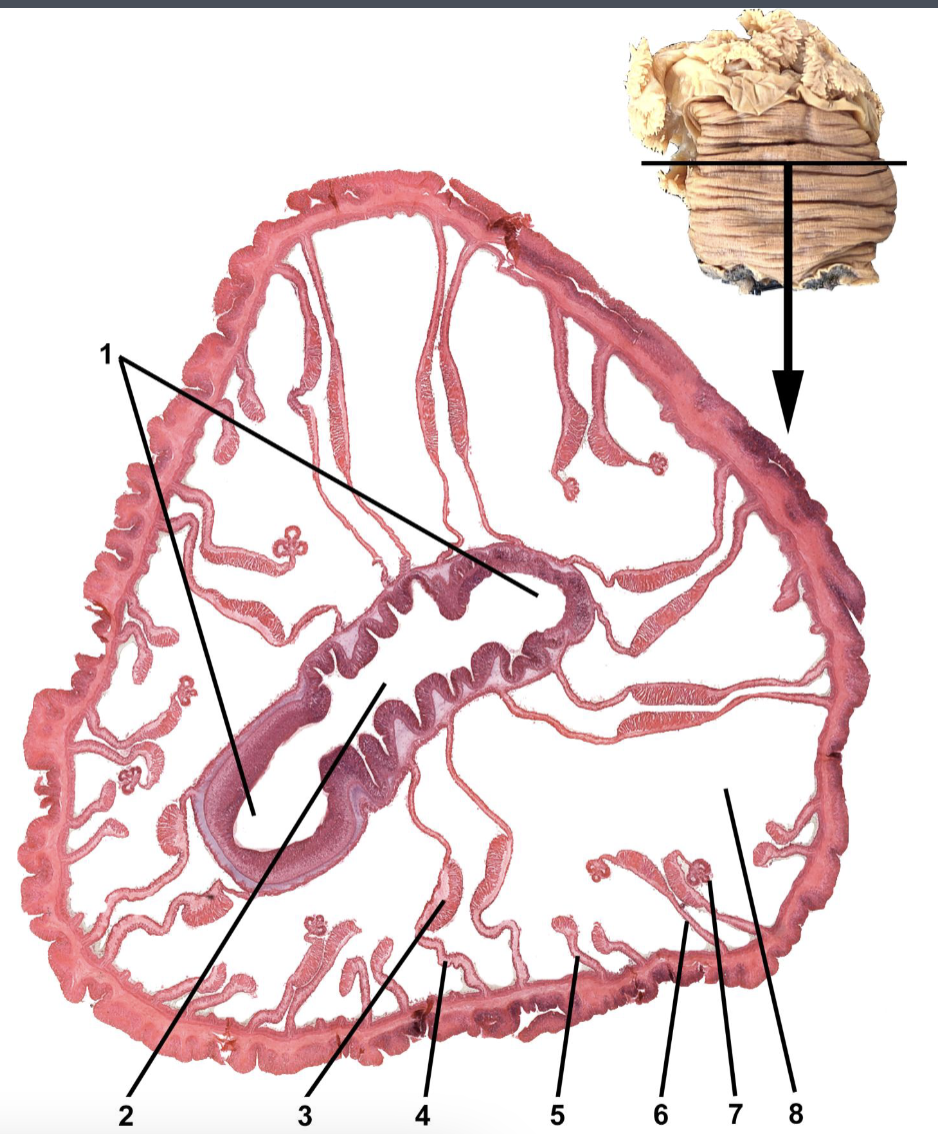
What order is this diagram of the horizontal cut ? Identify all the labeled parts.
This horizontal diagram cut is in order Actiniaria. 1. siphonoglyphs; 2. pharynx; 3. retractor muscles; 4. primary mesenteries; 5. tertiary mesenteries; 6. secondary mesenteries; 7. filaments; 8. gastrovascular cavity
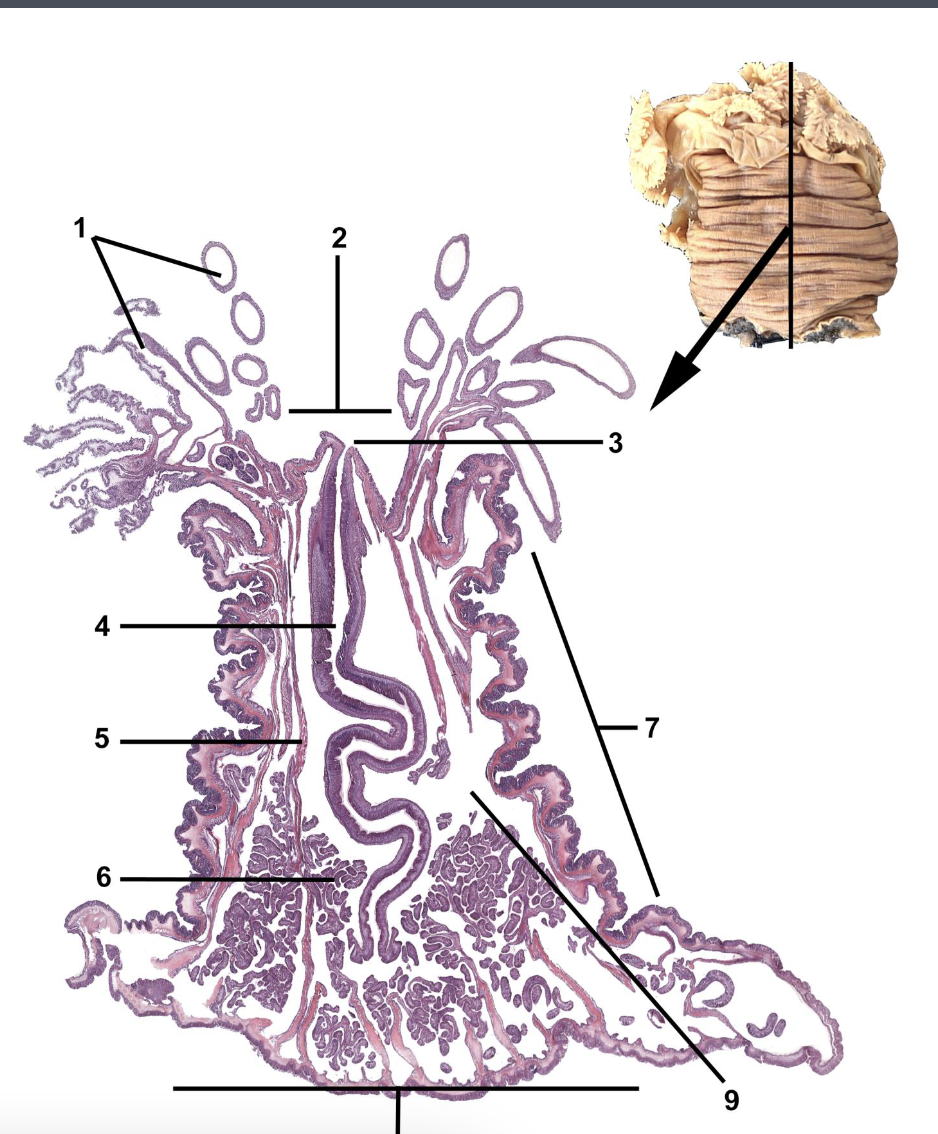
What order is this diagram of the horizontal cut ? Identify all the labeled parts.
This horizontal cut diagram is from order Actinaria. 1. tentacles; 2. oral disk; 3. mouth; 4. pharynx; 5. mesenteries and retractor muscles; 6. mesenteries & acontia; 7. column; 8. pedal disk; 9. gastrovascular cavity
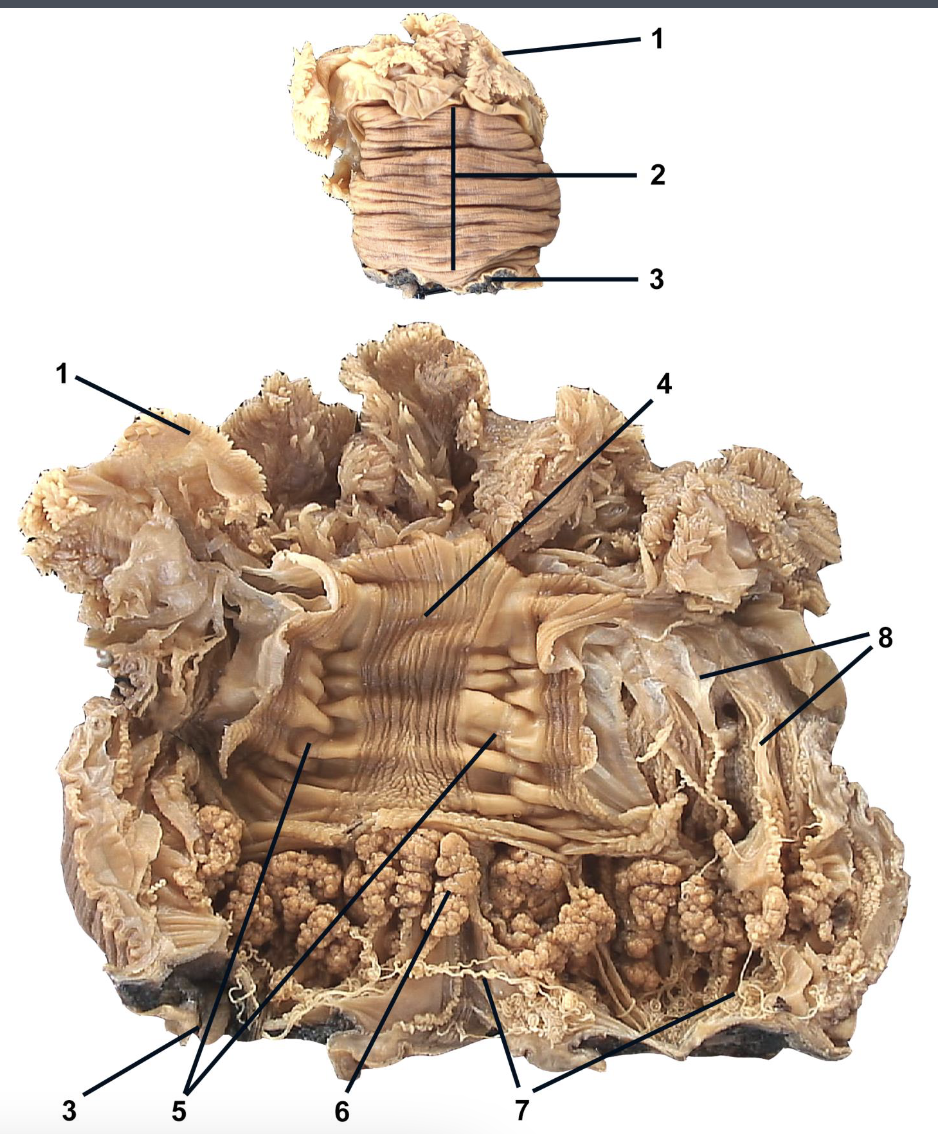
Identify all of the labeled parts of this Actinarian dissection.
1. tentacles and oral disk; 2. column 3. pedal disk; 4. pharynx; 5. siphonoglyphs; 6. gonads; 7. acontia; 8. mesenteries of gastrovascular cavity
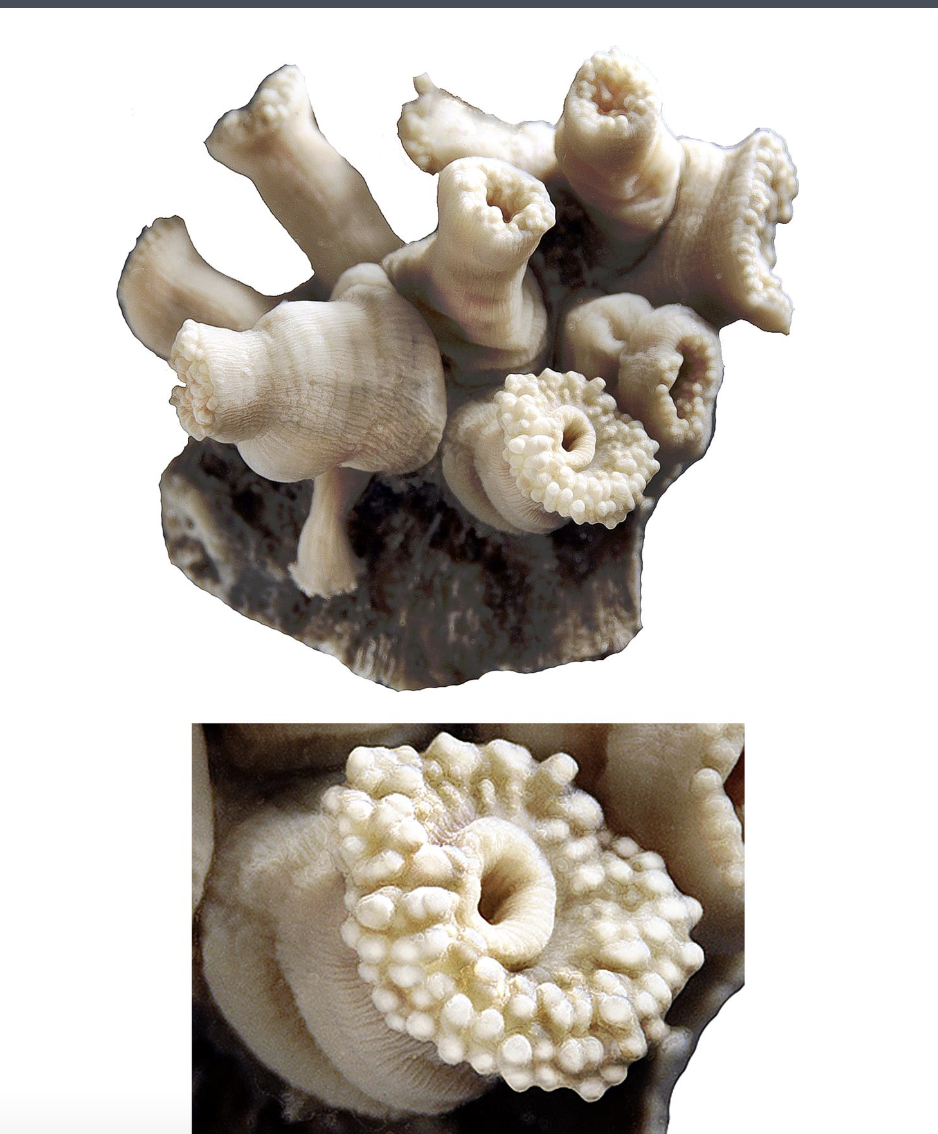
What order is this organism?
Order Corallimorpharia
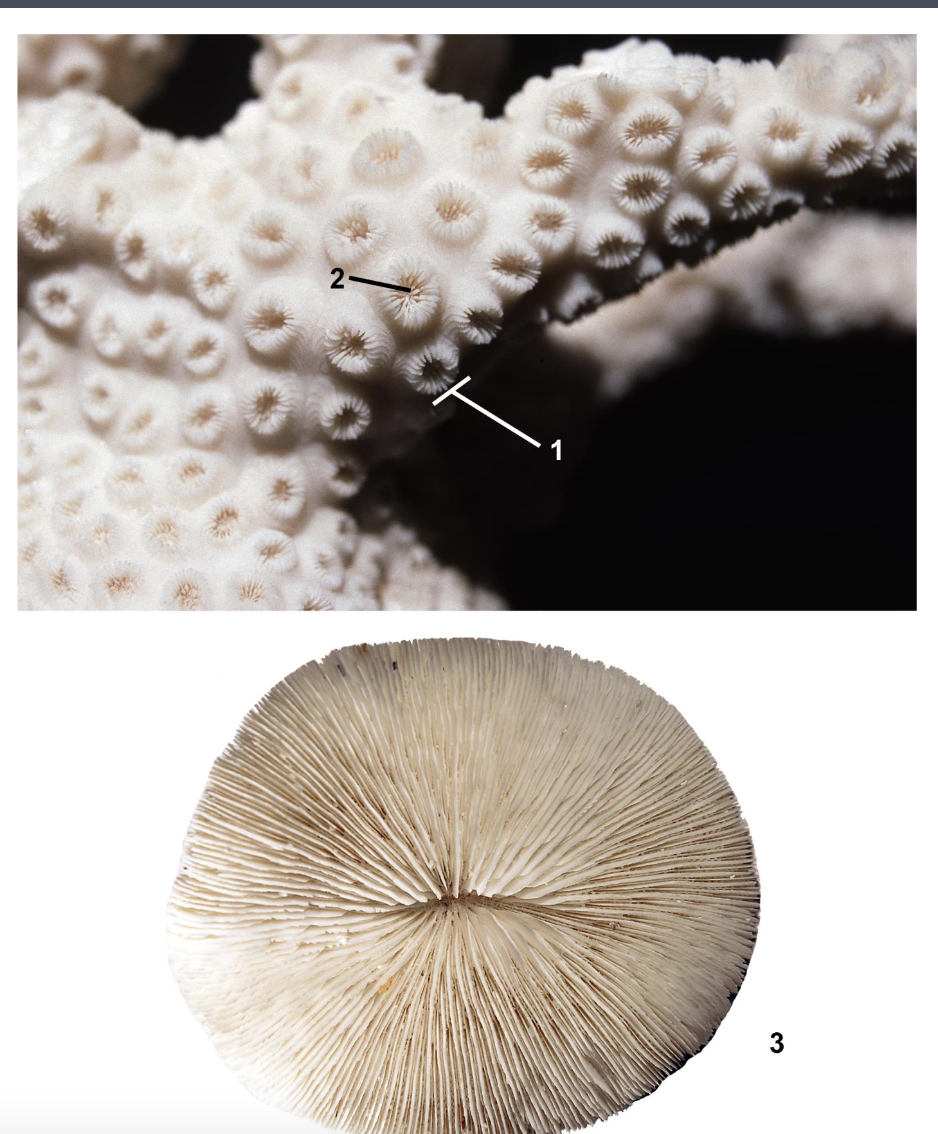
What class and order order is this organism? Identify the labeled parts.
Class Hexacorallia, Order Scleractinia
1. theca of colonial polyp; 2. sclerosepta; 3. solitary polyp
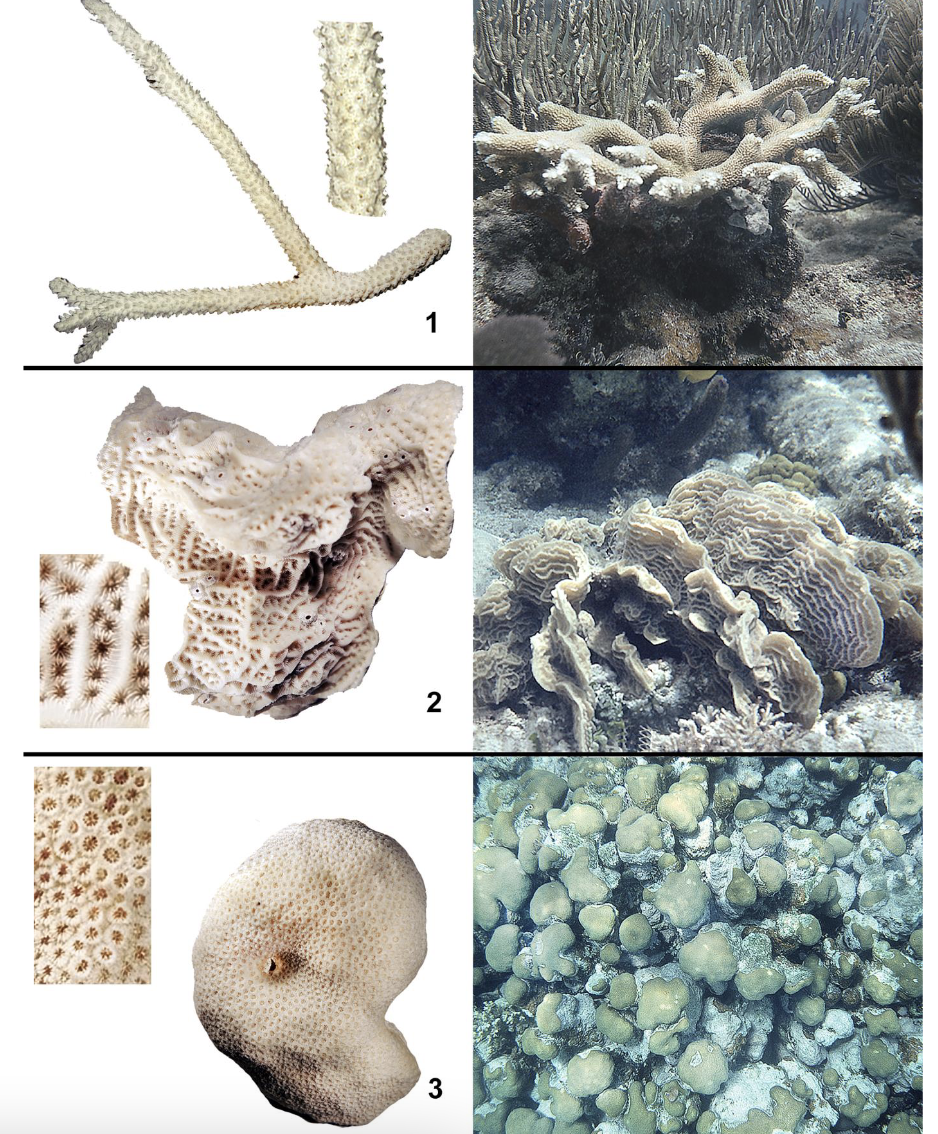
What genera are these corals?
Acropera
Agaricia
Orbicella
They are in Class Hexacorallia, Order Scleractinia
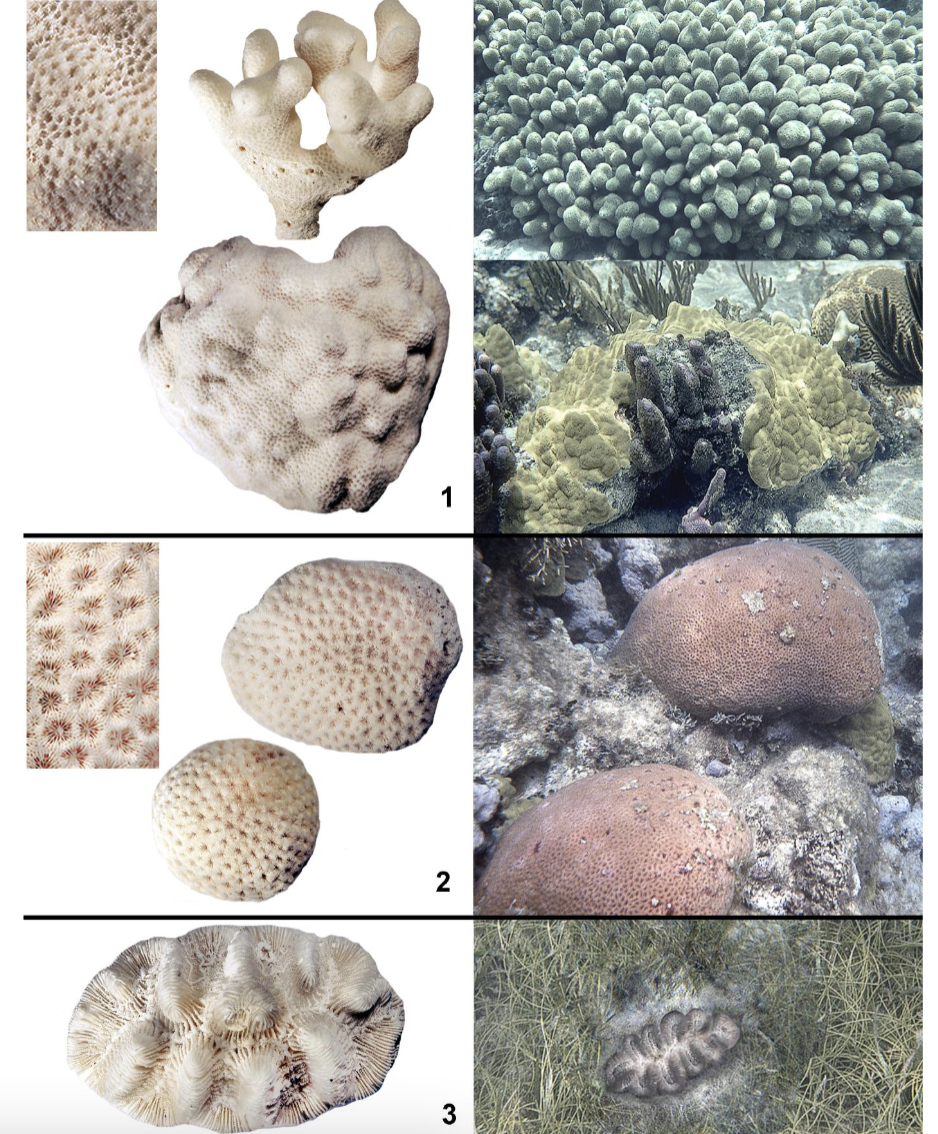
What genera are these corals?
two species of Porites
Siderastrea
Manicina
They are in Class Hexacorallia, Order Scleractinia
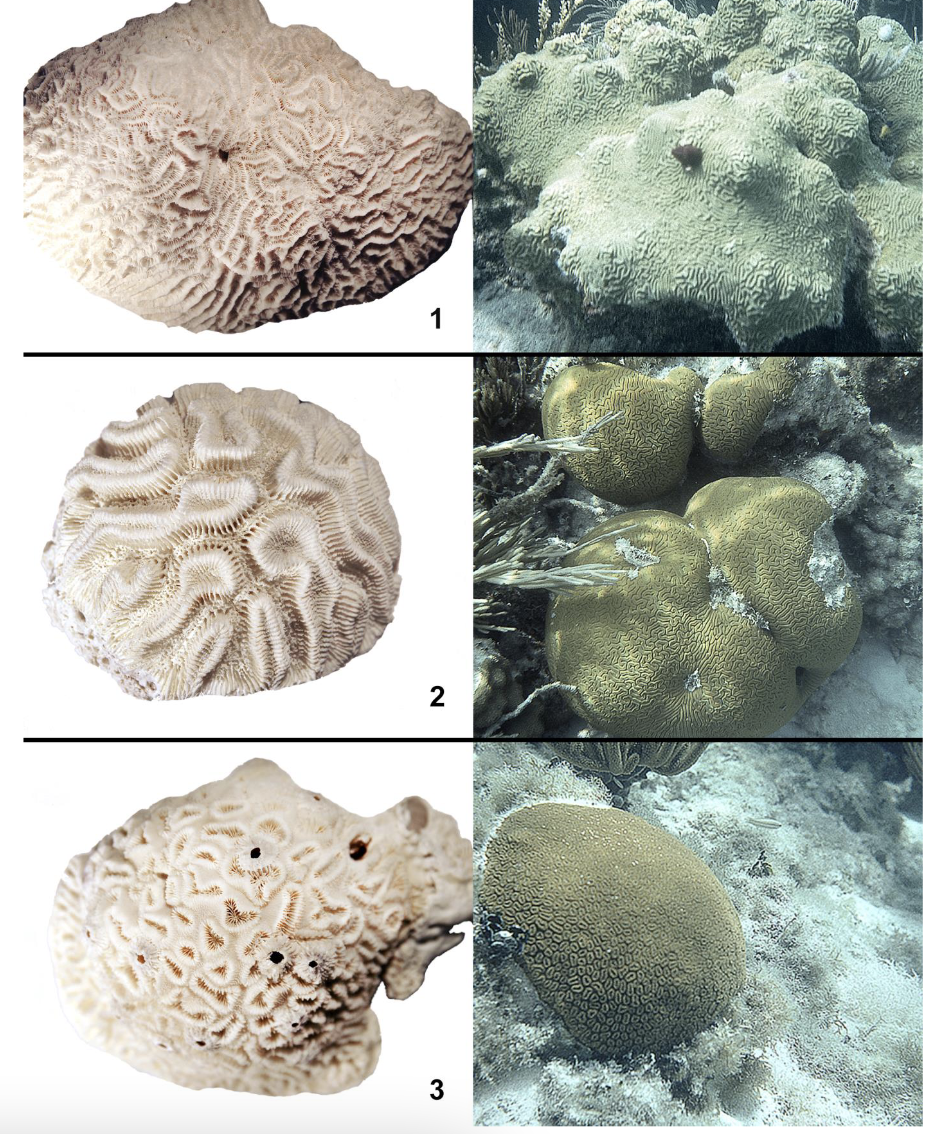
What genera are these corals?
Pseudodiploria
Diploria
Dichocoenia
They are in Class Hexacorallia, Order Scleractinia